

Private Guide in Japan: How to choose the Right English-speaking Guide
We, at Kanpai, have been collecting and publishing helpful information on how to prepare and enjoy trips to Japan for a long time, and we are aware that there are as many different ways to appreciate Japan as there are types of travelers.
Additionally, our community is made of members who like searching for the most accurate information and share relatable visit tips, especially on Kotaete , our community forum space.
What are the benefits of hiring a tour guide in Japan?
Even with thorough preparation, one of the best ways to enjoy a trip is to be accompanied by a local Japanese and English-speaking guide.
Many simple reasons are in favor of hiring a guide:
- To overcome the language barrier . As many Japanese struggle to speak English (nor any other foreign language), and allows for an unrivaled perspective of the country compared to traveling alone;
- Tour guides facilitate to make your visits enjoyable to the fullest : They know the places to discover (sometimes hidden from tourists), uninteresting or overrated places, and shortcuts to optimize your time of visits and see as much as possible;
- Having a guide makes the visit comfortable , as there is no need to worry about logistics or the itinerary;
- Polyglot expats or Japanese guides offer an exceptional experience sharing their sharp insight of Japan with you and can act as interpreters while interacting with locals on the spot.
With a good guide, it really is possible to save time, stress, and money!
Select your guide
When it comes to guiding services, because the varying types and levels run the gamut, it is complicated to separate the wheat from the chaff.
The Licensed Tour Guide
The first natural move might be to look for a Japanese government licensed tour guide.
There are a few thousand, most of them of Japanese citizenship. There are very few foreign guides as the exam is quite hard and the knowledge required is similar to an absurd cramming (as a ridiculous example, examinees can be asked who the Japanese ambassador to Zimbabwe was in 1973). On the other hand, foreign language usage is not as thorough as it should be, especially regarding the speaking part, according to many testimonies. It came to be sometimes considered an overrated certification and it seems that Japanese government intends to reform it in the near future.
However, the biggest disadvantage might be the guides’ lack of flexibility, as they will most probably want to stick to their set itinerary. Japanese licensed guides usually don’t create custom tours for their clients but they have a set route, with a tight schedule, and they unfold a history class routine speech, which can be boring. Notwithstanding the fact that their English proficiency might not be the best. Their rates are very expensive: up to ¥40 or 50,000 (~US$326.70) for a half a day tour, and it usually doesn’t include their meal or transportation fees!
We have tried such guided tours too, but we felt it was rather overpriced for an overall, unpleasant experience.
The Volunteer Guide
On the opposite spectrum, the volunteer or goodwill guide, is a good fit for low budget trips, and especially sought after by young travelers.
As a consequence, their availability is very limited (often only on the weekends) and private tours are out of the question. As they do not provide a contracted service, it is not possible to secure the tour date or to complain if the service is not of the expected quality or even abruptly canceled.
Oftentimes, these Japanese volunteers characteristically guide as a layman: Impossible to be sure if they are indeed citing accurate facts or not. Most of them are nice students or elderly persons and they tend to use guiding activity to practice a foreign language. So in the end, you might find yourself to be the one accompanying them for their benefit!
Note that while the guidance is free of cost, you will still have to pay for the volunteer’s meals, transportation and admission fees.
The Expatriate Freelance Guide
It has increasingly been easy to find expats freelancing as guides on the Internet 📶 over the last years. However, many of them are foreigners who married Japanese citizens and have a hard time finding a fixed or long-term job in Japan, mainly due to their lack of suitable Japanese-language proficiency.
The last point is the most problematic: How is it possible to label oneself a professional guide when not being able to read a map, a sign or a restaurant menu properly, discuss with locals on any subject or ask for information in Japanese? Moreover, they, too, often have their own set itinerary and don’t try to personalize the experience.
Beware of hidden fees as well: The displayed rates, often attractive, can double when adding the guide’s meal expenses, transportation and admission fees or if you want a private tour.
Lastly, be aware of the fact that these "freelancing guides" may be working undeclared from the Japanese authorities and without insurance, a reason for them to require a payment in cash only.
Particularities between June and September 2022
Since June 10, 2022 and the steady influx of tourism back in Japan, choosing a guide is an even more important matter.
The Japanese government indeed required that the guide accompanying the travelers be at least a Tenjoin , that is to say "Certified National Tour Conductor". Obviously, 99 % of the volunteers or freelancers don’t have such certification, and additionally certified guides are now required to work in cooperation with a travel agency. This requirement has been lifted on September 7, but it shows how important it is to check a guide's credentials for a travel in Japan .
Our Recommendation: Keikaku
We believe that an established and registered travel agency can offer one of the best experiences for guided tours in the archipelago, including safety and quality. Of course, good guides can be found everywhere, but authorized and registered travel agents are submitted to regulations that guarantee their staff and guides’ professional skills collectively.
Kanpai thus recommends Keikaku , whose team of bilingual guides in Japan organizes private guided tours in the most attractive destinations:
- Tokyo , the must-see capital, from which access is easy to Kamakura , Nikko and Hakone ;
- Kyoto , the traditional city, close to Nara , Osaka , Koya-san or Himeji ;
- An airport guidance service, in three of the busiest airports in Japan: Narita, Haneda and Kansai Airport.
Click on the Keikaku logo below to discover their services:

Keikaku is a human-sized travel agency managing a great group of certified guides in Japan, able to cater to any needs, with a friendly customer centered approach.
High-end but affordable guiding services are provided, with rates varying according to the tour length and / or to the number of participants: from ¥5,000 (~US$32.67) per person. And there are no hidden fees as Keikaku guides’ expenditures (meal, transportation and admission fees) are all included.
Their availability calendar is updated in real time and helps decide the most favorable dates for a tour, with lengths ranging from half a day, and up to three consecutive days, and even evening tours.
It is even possible to contact them to arrange a guide for the entire length of your stay in Japan.
What is a guided tour like with Keikaku?
The secret of a good guided tour lies in its preparation.
Each reservation with Keikaku is private and the guide will create your tour according to your needs, before your arrival in Japan. You will exchange with them by e-mail to explain what you want to do and decide on an itinerary and it is even possible to talk with the guide beforehand via Whatsapp, Skype or other video apps.
On the day of the tour, the guide will come to pick you up at your accommodation. In addition to the guidance, they can help you to get your JR Pass , order train 🚅 tickets and, of course, tell you many anecdotes about life in Japan.
Discover Keikaku
It is strongly advised to place a reservation on your preferred tour dates as soon as possible, as Keikaku guides are often booked well in advance, especially for peak touristic seasons ( April , August , October , etc.) or holidays periods. Fortunately, it is possible to place a reservation up to 12 months in advance, to ensure getting your preferred dates.
Let’s follow the guide!
- Flights and Airports
- Accommodation
- Transportation
- Internet & Phones
- Budget and money
- Japanese Food
- Visit with Kids
- Seasons: spring / summer / autumn / winter
- Weather forecast
- Time in Japan
- Holidays & Festivals
- Natural Disasters
- Customs and Duties
- Works and Closures
- From April 29 to 5 May -- Japanese Golden Week
- May 12 -- Mother's Day in Japan
- June 6 -- Beginning of the rainy season (Tsuyu) in Japan
- June 21 -- Summer starts in Japan
- July 1 -- Season start for climbing Mount Fuji
- From July 1 to 31 -- Gion Matsuri Festival in Kyoto with float processions on July 17 and 24
- Tokyo : Shinjuku , Shibuya , Harajuku , Asakusa , Akihabara , Odaiba , Ikebukuro , Ueno , Roppongi , Chiyoda , Ryogoku ...
- Around Tokyo: Kamakura , Nikko , Hakone , Mount Fuji , Mount Takao , Yokohama ...
- Kansai: Kyoto , Nara , Osaka , Mount Koya , Himeji , Kobe , Kinosaki , Kumano Kodo , Ise ...
- Japanese Alps: Kanazawa , Matsumoto , Takayama , Shirakawa-go , Nakasendo ...
- West: Hiroshima , Miyajima , Shikoku , Onomichi , Naoshima , Izumo , Kurashiki , Matsue ...
- South: Kyushu , Okinawa , Yakushima ...
- North: Hokkaido , Tohoku ...

- Temples and Shrines
- Gardens and Parks
- Hiking and Trekking
- Observation Decks
- Public Baths (Onsen and Sento)
- Festivals (Matsuri)
- Amusement Parks
- Visit on a Budget / Luxury

Keikaku is a travel agency specialist of Japan and providing different kind of services:
- Japan Rail Pass
- English speaking Guides
- Pocket Wi-fi
- Japan Nightlife
- Working in Japan
- Religion and Spirituality
- Arts and History
- Movies / Animated Movies
- Japanese Music
- Studio Ghibli
- Photos / Videos
- Weird Japan
- Translations
- Kana & Kanji
- Japanese Swear Words
- Honorific Suffixes (san, kun, chan...)
- Introducing yourself
- Thank you / Apologize
- Count / Say Your Age
- Say the Date / Tell the Time
- Happy birthday
- Enjoy Your Meal
- Writing your name

Kanas are the much-needed basic characters of written Japanese language. Memorize them at a fast pace with our method.

Ask any kind of question and share your knowledge about Japan in Kanpai’s community space, our Q&A section Kotaete.

Isshoni means "together" in Japanese: share your trip details (dates, places you would like to visit) and find companions to travel in Japan.

Create your Kanpai account to manage your profile and view your participation history (questions, answers).
- Tokyo Cheapo (繁體中文)
Your Guide to Tour Guides in Tokyo
Wondering whether to hire a tour guide in Tokyo? So are thousands of other travelers to the capital. If you’re anything like us, you’re probably not sure that you can justify opening your wallet for the expense. After all, Tokyo is relatively safe and well signposted, so can’t you make your own way around? The short answer is yes, but tour guides can be hugely advantageous in certain situations . Here, we’ll look at when you might use one, and what your options are (including those that don’t cost a single yen).

When it’s a good idea for a tour guide in Tokyo
If you’re only going to be here for a few days, it’s your first time, or you’re a resident but have folks coming to visit and you can’t get off work, then having a tour guide in Tokyo can be helpful. It’s a good way of making sure that you (or your friends and family) get to see the major sights in the city without feeling lost or overwhelmed. I remember my first day trying to navigate the streets of Tokyo – I spent it going in and out of what seemed like countless different exits and entrances of a Bic Camera store. It felt like I was in a labyrinth (and I didn’t even find the floor with the fancy toilet seats).

Should I book a private or group tour?
Group tours tend to be cheaper, and allow you to blend into the background and avoid lots of chatting with the tour guide – but the lack of individual attention can be frustrating if you have questions about the attractions you’re being shown. They can also be quite restrictive in terms of choice and movement; you might find yourself shunted from one sight to the next on a tight schedule. That said, group tours suit some cheapos perfectly, and can provide a fun experience and the chance to make friends with other tourists.
Private tours can generally be tailored to suit your interests and schedule, and give you the chance to gain a more in-depth understanding of the area. There is also more flexibility when it comes to making changes to the itinerary, like a spontaneous stop-off for ramen or a selfie next to a creatively-titled establishment (cough cough, Grope in the Dark* and so on). While some private tours can be pricey, there are a number of affordable options – and a bunch of free ones, too.

Recommended tour guides in Tokyo
Right then, which of the hundreds of tour guides in Tokyo do you go with?
If you’re happy paying for a tour, then booking company Viator is a good place to start. They offer a bunch of different day (and night) tours, centered around temples, chow, photography and more–depending on what you’re into. Prices start around US$ 40.00 . They also do bike tours , if you’re wanting to see the city on wheels.
The folks over at Klook have some good deals too. In addition a wide range of Tokyo-based tours and day trips — like this Mt Fuji day trip — they also have great deals on entry tickets to various attractions.
Tokyo sightseeing bus
Another idea is to take a ride on the double-decker, open-roofed Sky Hop Bus, which circles Tokyo’s major tourist attractions (including the Imperial Palace , Ginza and Omotesando ) and allows you to hop on and off as you please. There is an amphibian version, aptly called Sky Duck, too.
Free Tokyo tours
If you’re happy with a more casual approach and your schedule is flexible, then you could always try one of the many free walking tours of Tokyo . Mostly organized by goodwill guides, they can be a yen-saving way of getting your tourist on.

DIY: Self-guided tours
If you’ve decided that you’d rather explore Tokyo on your own, you’re not without resources. We’re not about to leave you flapping about with a map under a cherry blossom tree – that would be unsporting. To make things easy for you, we’ve put together a number of itineraries for half-day and whole-day walking tours that take you to spots both well-known and slightly off the beaten track. See for yourself here .
The best thing about taking a DIY approach? You’re likely to stumble across random cool cafes , restaurants , shrines and street art that even local guides wouldn’t think to take you to (that’s the caveat thingy we mentioned earlier).
*It’s a hip-hop apparel store.
This post was originally published in February, 2017. Last updated on September 24, 2018.
- Guided tours
- Self-guided tour
- Sightseeing
- Walking Tour
Get our Tokyo Cheapo Hacks direct to your inbox

The Suica Card in 2024: How and Where to Buy Tokyo's IC Card

Luggage Storage In Tokyo

Best Budget Sushi Restaurants in Tokyo

Tokyo Sumo Guide: When and Where to Experience Sumo Wrestling

TOP 20 Things to Do in Shinjuku, Tokyo

Narita Airport to Tokyo

24 Hours in Tokyo — The Ultimate Itinerary Guide

English-Speaking Hospitals in Tokyo — And How To Visit Them
Absolutely everything you need to know about seeing a doctor in Japan.

Yozakura: 8 Best Nighttime Cherry Blossom Illuminations in Tokyo
Light-ups have been extended, since the blossoms were so late this year.

New Video: Tokyo's Best Airport — Flying into Narita vs. Haneda
Which one should you use when flying to Tokyo?

The Hokuriku Arch Pass: Taking the Slow Route Between Tokyo and Osaka
Meander along Japan's "golden route" — exploring Nagano, Kanazawa and more.

Spring Escapes: Top 7 Day Trips from Tokyo
Must-see cherry blossom, moss phlox, and wisteria locations — all easily accessible from Tokyo.

Ashi Angels: Hakone for Evangelion Fans
Explore the real Tokyo-3.
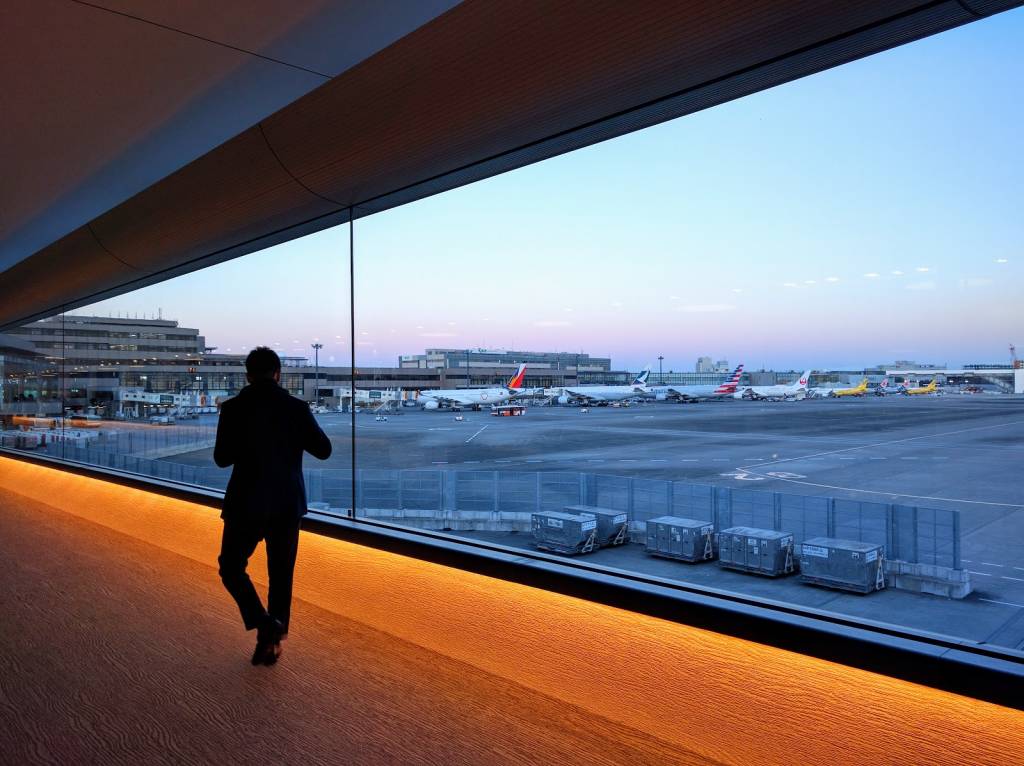
Finding the Best Transport From Narita Airport to Tokyo
How to get from the plane to your accommodation.

New Video: Top Japanese Phrases You Need Before Traveling to Japan

5 Stunning Spring Bus Tours From Tokyo
Take a ride to experience the best of the season.

Top 25 Easy Day Trips From Tokyo
Add a few of these to the wander list.

Tokyo to Osaka: Fast and Creative Ways of Getting There
Full guide to taking the bullet train, buses, and low-cost flights.

New Video! Suica Card in 2024: How and Where to Buy
We cover where and how to purchase Suica cards, digital Suica, Welcome Suica, and Pasmo Passport.

Close without accepting
Meet our Rakutabi Guides
Meet Dan, our Japanese Guide.
Meet P-J, our European Guide.
Meet Charline, our English / French guide
Meet Carla, our Spanish Guide.
Meet Sonia, our Arabic Guide.
Meet Nori, our Japanese / English guide.
MEET LUCIANO / ルチアーノ, our Argentinian guide
MEET HORACIO / ホラシオ, our Mexican guide
MEET QUENTIN , our French / English Guide.
MEET Albert , our Spanish guide. (trilingual : EN, GER , SP)
INFORMATION
- 2017/11/20 Hakone in November is exquisite and so eye-candy !
- 2017/10/30 Carla, our intrepid Spanish / English Tour Guide live from Kyoto !
- 2016/09/13 You would think you're in Kyoto...
- 2016/09/08 RAKUTABI on Facebook : Like us ! ♥
- 2016/08/31 Rakutabi's Special Autumn Campaign !
Testimonials
María (Argentina)
5 days tour (Tokyo - Nikko - Hakone - Kyoto - Osaka) Nos lo pasamos genial en Japón con tu guía Carla. Una experiencia muy agradable, lo haremos de nuevo.
Varma (U.S.A)
Tokyo (Asakusa - Sumida River Cruise - Odaiba - Harajuku) - 8H
My wife and I had a great time exploring Tokyo and its must seen places along with our very experienced Rakutabi guide. Will definitely do it again in a near future.
" Highly recommended."
Maxime (France)
Tokyo - Old " Shitamachi " historical town - 8H
J'ai beaucoup aimé l'accueil et l'impression générale.
Notre guide Rakutabi s'est montré très professionnel et nous a aidé pour tout un tas de choses dès notre arrivée à Tokyo.
"Je recommande !"
Karen (Australia)
I had a great time exploring Hakone and its beautiful lake / mountains / volcano. The car cable adventure as well as the small pittoresque local train taking us to the region is an absolute must-do! Our Rakutabi guide was very knowledgeable about the place as well as super friendly. Will definitely do it again in a near future.
"Highly recommended."
Elisabeth (U.S.A.)
My father promised me to take me with him to Japan and it finally happened ! Our Rakutabi guide took us to all the major trendy and fashionable spots of Tokyo and was patient enough to wait for us while we were buying tons of souvenirs around Harajuku.
Great overall experience, super friendly all the way.

Explore the world with tourHQ
- Destinations
- I am a Guide
- I am a Traveller
- Online Experiences
- Currency (USD)
Divided between electric cityscapes like Tokyo and Kyoto and wild mountains clad in snow and jungle alike, Japan is a real gem of the Far East. Check it out with a local Japan Travel Guide from tourHQ.
Search Cities in Japan
Japan Tour Guides

Mike Masaki
Hi everybody,I'm Mike, a national licensed tour guide from Kyoto.I was a teacher at a private ...

Yoshi Kirihata
My name is Yoshi, alias known as "Lonesome Cowboy", who used to live and work in El Paso in ...

Mayumi Sorimachi
++ Please note that I am already almost fully booked in March and April 2024. Please check my ...
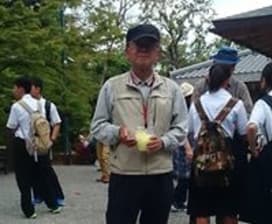
I was born in Nara and have been living in Kyoto for more than 30 years. I worked in Osaka for ...

Koichi Tanaka
Hi, my name is Koichi. I'm offering guided tour and memorable photo shooting experience in Kyoto.I ...

Makoto HIRATA
National Guide Certificate: EN01015. From business discussions to a sightseeing guide, I ...

Ihor Ihnatiev
There is one main point for me on every trip: be a traveler, not a tourist. My goal is to help you ...
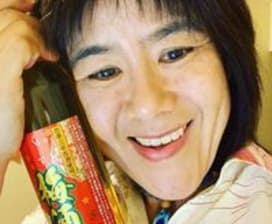
Kumiko Teruya
"Enjoy a relaxing and fun trip with an energetic, friendly guide in the beautiful islands of ...

Tatsuya Oka
I'm a Japanese guy who was born in raised in Mihara,Hiroshima prefecture,Japan.Mihara is most ...

YAMANE Tomohiro
Hi! I have lived in Hiroshima for more than 50 years. I live in Higashihiroshima, which ...
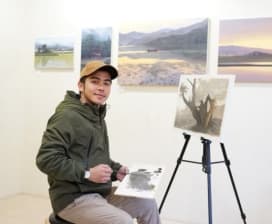
Ryan mico Yamamoto
Hey there! I'm Mico Yamamoto, a local landscape oil painter and travel enthusiast based in the ...
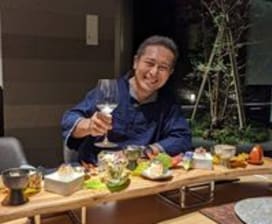
Yukinori Hashimoto
I was born and grown up in Tokyo and started my carrier as a Guide-Interpreter in 2017 there. But ...

Fumiko Takano
I am a native to Hakodate, having lived since 2003 after working in Tokyo for about 20 ...
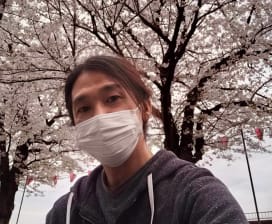
Hero HM Tour
Hi there, I am Hiroshi. Although I love to be called "Hero", but I am Hiro in short. (︶︹︺) . ...
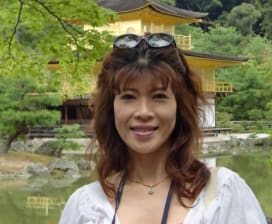
Keiko Arita
I can be the great bridge between you and Japan! My job experience is very colorful, ...

Michiru Azuma
I'm not available at all.
Japan is a world of stark contrasts like no other; a place where hi-tech futurist cityscapes rub shoulders with undulating green hills of cherry blossom orchards, and rice terraces run down to exotic coastlines laden with coral reefs. It’s also home to the most populous single metropolitan area in the whole world: the city of Tokyo. The country itself is spread out across an archipelago of more than 6,000 islands, and while the vast majority of its people reside on one of the four largest - Kyushu, Honshu, Hokkaido, or Shikoku – this means there are plenty of little nooks and crannies to explore; from the paradisal beaches of the Satsunan Islands to the historical war sites on Okinawa. Any Japan tour guide will tell of how first-time visitors are left in awe by the efficiency of Japan’s modern, mechanised society, while a short train ride on the Osaka express will plunge others right into the heart of the country’s rural society, where die hard traditions still reign supreme and the unique and wonderful culinary dishes of the old Japan still linger on the menus.

Tell us your destination, date, and group size.
Our team of travel experts and guides will design a tailored itinerary just for you., enjoy your trip with peace of mind knowing everything is taken care of..
Say Goodbye to Travel Stress
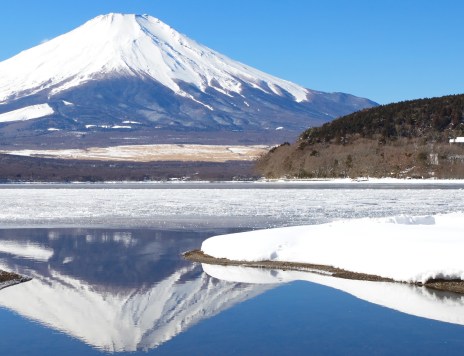
Choose Currency Close modal
- USD US, dollar
- GBP British Pounds
Cookie icon We use cookies!
We, and third parties, use cookies for technical and analytical purposes, for marketing purposes and for integration with social media. For more information, refer to our Privacy Policy and Terms of Consent.
By clicking on 'I agree', you consent to the use of these cookies.
Tokyo Private Tour Guides
Contact a private tour guide to plan your tokyo itinerary and book online..
View all 6264 reviews
Popular Tokyo Tour Guides

My name is Shusaku. I was born and raised in Osaka, where I had the opportunity to immerse myself in the beautiful landscapes and rich culture of the region. During my travels to 10 different countries, I came to realize the importance of listening to the locals to truly understand the culture and charm of a place. This experience taught me that local knowledge and experiences are invaluable in building a deeper understanding and connection while traveling. In my tours, I make it a point to not only showcase the popular tourist destinations but also to share insights into the everyday lives of locals and the culture of the region. By incorporating stories and knowledge from locals, I aim to provide a more enriching travel experience. My mission in life is to foster a deeper understanding of the world through travel and to build connections with people from different backgrounds. I look forward to creating unforgettable memories and sharing new discoveries with all of you!

Hi I’m a friendly Australian living in Japan for 20 years. I love this country and still now love to travel and find more wonderful places to visit here. I also want new travelers to experience the country the way I do.
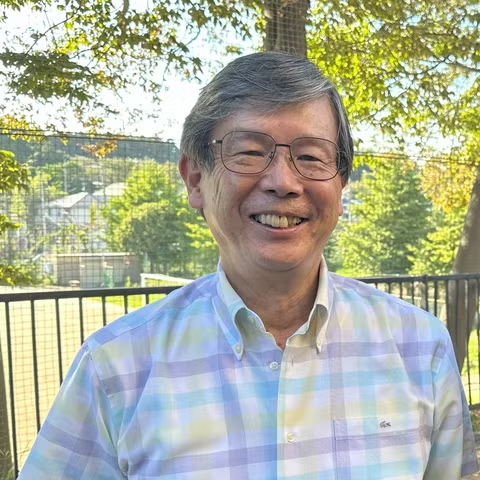
I’m so excited to have a chance to show you around my favorite spots in Kanagawa prefecture. I was born in Kanagawa. I spent my whole school life, including university, here in Kanagawa. I worked as a high school English teacher here for 40 years. I love Kanagawa so much. We have many interesting tourist spots, like Hakone, Kamakura, Enoshima and Yokohama. I got my tour guide license in English in 2009. I am still an English teacher. To give an interesting and impressive lesson to young high school students, I’ve learnt and gathered many kinds of information. I also have a license to teach social studies, so I have a wide range of knowledge about Japanese culture and history. I’m sure to provide you an interesting tour.

I live in Yokohama, Kanagawa prefecture. I have a license to teach in high schools and was admitted to the degree of Master of Arts in Teaching English as a Second Language in the University of Birmingham. Until 2015 I had been teaching English at public high schools in Kanagawa for 37 years. During that time, I had some experience of guiding students from overseas through sister-school relationship around Tokyo and Kanagawa. Therefore, I had good command of English with the TOEIC score of 935. As for a tour guide experience I earned the certificate of National Government Licensed Guide-Interpreter in English and since then I have guided tourists to the popular sites around Tokyo, Yokohama, Kamakura and Yokosuka. My guiding focuses on introducing not only Japanese historical and cultural backgrounds but also giving tourists some tips to travel Japan only by themselves, such as how to use trains and subways, find good restaurants, reserve tickets, buy survenier, and speak basic Japanese. In addition, my tour includes opportunities to experience Japanese culture like Zen meditation, ninja performance, visiting anime's location sites based on tourists' request. Besides, by means of my hobbies of writing English Haiku and Waka (traditional Japanese poems) and performing Rakugo (traditional Japanese funny story telling) in English, I can surely entertain tourists during the tour. My moto as a tour guide is let the tourists have a once-in-a-lifetime experience in Japan with my profound, intelligible and interestiog guiding.
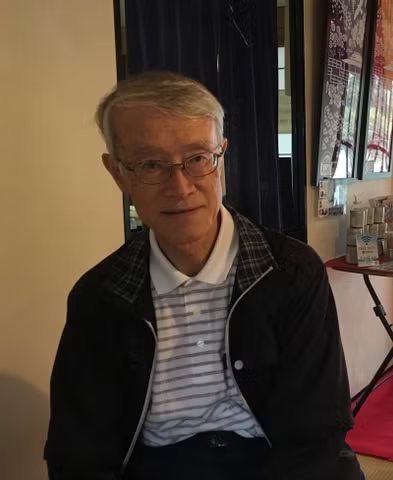
Hello, I am Junichi. I am a licensed tour guide. I worked at a bank for 41 years, including overseas assignments in NY & LA for 12 years. I started this tour guide in 2007. I'd like you to experience and enjoy a Japanese culture different from your own.
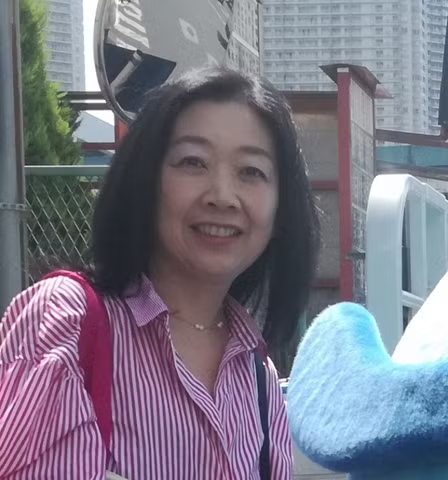
Hi! Dear my future guest! I hope you are well. Hard conditions have been still going on but I'm so excited to welcome you. During the pandemic, I've got certificates as a medical interpreter and had chance to work at a hospital in Tokyo. It was a great opportunity such as to attend patients with covid and others illnesses. I came to reconsider safety and security is very important for travellers to relax and enjoy. I live in Chiba prefecture, commuting area to Tokyo. I was born in a family of Buddhism priest in Fukushima, So, I like to show you traditional temples and shrines just as a part of everyday life. I also like nature, arts, fashion, foodie....maybe everything! The attraction of Tokyo is mixture of something new and something old. Please feel many attractive scenes with me! I started my carrer as a tour conductor and visited many countries and had a chance to live in the Philippines for 5 years and US for 1 year. I remember people were so kind and generous to me. That's the reason why I am a tour guide now to do something helpful for guests from all over the world. So please don't hesitate to tell me your interest, I'm willing to be with you almost everywhere around Tokyo and Japan!
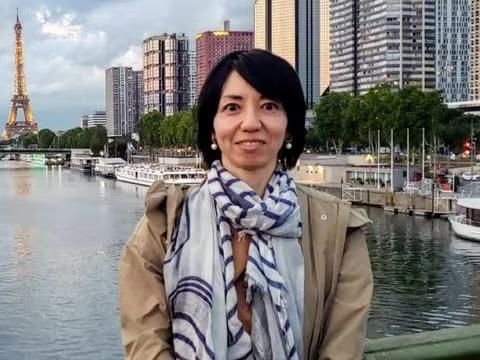
Hi, I'm Ritsuko, a national licensed tour guide. I was born and raised in Tokyo. As Tokyo is a city of many faces, I hope you will discover your hidden gems during the tour. I love to wander around the shops and places downtown and one of my hobbies is to find daily-use products made in Japan. So I can select unique souvenirs for you within your budget! I am football-mad and have been to every FIFA World Cup except one tournament since 1998. I also love to go island hopping in Asia. That's why I have been to over 30 countries. Wherever I went, people were so kind to me. So, it's my turn. I will do my best to make your tour a memorable one! Hope to hear from you soon.

Hello! I am Takako Takata. I was born in Kyoto and grew up in other several districts in Japan where I was attracted by each place's feature. I started the tour guiding in 2009 in which I introduce interesting and unique spots to tourists. I love to share the marvelous time and moment with people through tours. In Japanese, we have a wonderful phrase expressing such moment and we call it "Ichigo Ichie". It means we have to treasure every encounter, a once-in- a-lifetime-encounter that is , as it may not recur again. This word came from the spirit of tea ceremony. Anyway, let us enjoy extraordinary tours in Tokyo together, shall we ?
Day trips from tokyo.
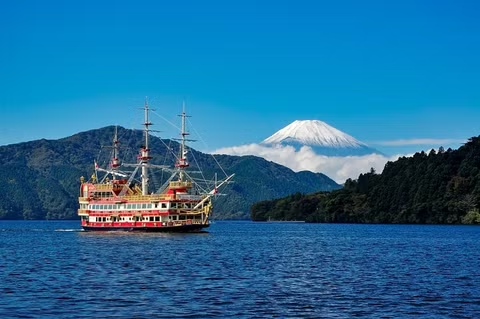
Tokyo Tour Reviews
Michelle T.
Let’s visit “must-see” spots in Tokyo in a day
“ 2 Days in Tokyo with Nao ”
Our family spent 2 days touring Tokyo with Nao, and they were terrific! We worked with Nao before our trip to customize our two days in Tokyo. Nao provided suggestions, organized the itinerary, made reservations for us at great restaurants to have lunch at both days, and guided us through the subway system to each of the spots on our tour. Along the way, Nao provided great information at each tour spot and engaged terrifically with our 15-year-old daughter throughout our 2 days together. I would highly recommend Nao to anyone looking to book a tour of Tokyo!

Dear Michelle san Thank you so much for your comment on my tour. I could make good memory of travelling with you in Tokyo. I had very pleasant time with your family. Please give my best regards to Brian and Sydney. Nao
the tour for Astor G.
“ Very Useful ”
It was our first time in Japan. The visit taught us how to use public transport, told us about the culture and traditions of Japan.
Half-Day Tour of Tokyo
“ Excellent guide! ”
My tour with Ritsuko was absolutely fantastic! She fully designed my itinerary to see many famous places around Tokyo. Ritsuko also gave me many helpful tips throughout about Metro lines and where I could grab good and other general tips about Tokyo. If you are looking for a friendly and easy-going duide, Ritsuko would be your perfect choice.

Hi Leyla, Thank you so much for your positive review and it was my pleasure to be your guide! Although it was much hotter than usual, I'm glad you enjoyed the tour. I hope you continue to have a wonderful time in Tokyo between your work schedule. And please come back with your whole family someday. All the best.
The best tours and activities
With a real local of your choice
The option to personalize your tour
Just contact your favorite local
Only private tours!
So no group tours with strangers
Related Tokyo Tour Guide Pages
Local tour guides in tokyo.
Elevate your Tokyo exploration with private tours and a local guide that unveils enriching stories and curated experiences for a unique city adventure.
There’s more to Tokyo than the Sky tree and busy train terminals. A private guide ensures your preferences shape the itinerary, offering you a chance to explore Tokyo's diverse neighborhoods, each with its own style and charm. From the rare finds in Yurakucho, to the book loving streets of Jimbocho, there’s a new discovery around every corner.
Add some cultural depth to your Tokyo trip with a local guide that appreciates the city’s layers. In the historic district of Kagurazaka, known for its old world structures and charm, your guide can share tales of the mysterious yet beautifully preserved geisha culture and lead you to Kagurazaka Street, which is sprinkled with teahouses, artisan stalls, and even French-inspired bistros.
Winter is here! Check out the winter wonderlands at these 5 amazing winter destinations in Montana
- Travel Destinations
How To Be A Tour Guide In Japan
Published: December 12, 2023
Modified: January 3, 2024
by Joane Biggs
- Arts & Culture
- Plan Your Trip
- Travel Tips
Introduction
Welcome to the enchanting world of being a tour guide in Japan! Known for its rich cultural heritage, breathtaking natural beauty, and vibrant modern cities, Japan has become a sought-after destination for travelers from all corners of the globe. As a tour guide, you have the incredible opportunity to share your passion for this captivating country and help visitors create unforgettable memories.
Being a successful tour guide in Japan requires more than just knowledge of the popular tourist spots. It involves a deep understanding of Japanese culture, history, language, and customs, as well as excellent communication and customer service skills. In this article, we will explore the qualifications, responsibilities, and skills needed to excel as a tour guide in Japan, offering valuable insights to those who aspire to take on this rewarding role.
Whether you dream of guiding tourists through the bustling streets of Tokyo, leading them to ancient temples in Kyoto, or immersing them in the tranquil beauty of the Japanese countryside, this guide will provide you with the essential knowledge to embark on your journey as a tour guide in Japan.
Qualifications and Skills Required
Being a tour guide in Japan requires a unique set of qualifications and skills. While there are no strict educational requirements, having a strong foundation in Japanese culture and history, as well as the ability to effectively communicate with diverse groups of people, is essential. Here are some of the key qualifications and skills required to become a successful tour guide in Japan:
- Knowledge about Japanese Culture and History: A deep understanding of Japanese traditions, customs, festivals, and historical landmarks is crucial. Tour guides should be able to provide insightful information about the places they visit, enriching the experience for tourists.
- Familiarity with Popular Tourist Destinations: Being familiar with popular tourist attractions such as Tokyo, Kyoto, Hiroshima, and Mount Fuji will allow you to create engaging itineraries and showcase the best of Japan to your clients.
- Language Proficiency and Communication Skills: Fluency in English (or another language commonly spoken by tourists) is essential. Clear and effective communication is key to ensuring that tourists have a memorable and informative experience.
- Understanding of Local Customs and Etiquette: Japan has a unique set of customs and etiquette that must be respected. Being knowledgeable about appropriate behavior in different situations will help create a positive impression among tourists and ensure a smooth travel experience.
- Professionalism and Customer Service: A tour guide should possess a professional demeanor, be organized, punctual, and approachable. Excellent customer service skills, including patience, empathy, and the ability to handle diverse personalities, are essential for providing a memorable and enjoyable trip for tourists.
- Problem-solving and Adaptability: Unexpected situations can arise during a tour, such as transportation delays or changes in weather conditions. Being able to think on your feet, adapt quickly, and find suitable solutions is crucial.
Having a genuine passion for Japan and a love for sharing its unique culture and attractions with others is also a valuable asset for a tour guide. With these qualifications and skills, you’ll be well-prepared to embark on a fulfilling career as a tour guide in Japan.
Knowledge about Japanese Culture and History
As a tour guide in Japan, having a comprehensive understanding of Japanese culture and history is fundamental to providing an immersive and educational experience for tourists. Your knowledge in this area will help you to contextualize and explain the significance of the places you visit, adding depth and richness to the tour. Here are some key aspects of Japanese culture and history that you should be well-versed in:
- Traditional Arts and Crafts: From the elegant art of tea ceremony (chado) to the intricate craft of paper folding (origami), understanding and being able to explain the traditional arts and crafts of Japan will allow you to showcase the country’s deep artistic heritage.
- Religious Practices: Japan is home to a variety of religions, including Shinto, Buddhism, and Christianity. Familiarize yourself with the basic tenets and practices of these religions to provide insights into the places of worship and spiritual significance.
- Historical Periods: Japan has a rich history spanning several periods, including the Heian, Kamakura, Edo, and Meiji periods. Being able to provide a brief overview of these periods and their impact on Japanese culture will enhance the understanding of historical landmarks.
- Architecture: Japan is renowned for its unique architectural styles, such as traditional wooden structures seen in shrines and temples, as well as modern architectural masterpieces in cities like Tokyo and Osaka. Explain the architectural elements, symbolism, and significance of these structures to tourists.
- Festivals and Celebrations: Japan is famous for its vibrant festivals and celebrations throughout the year, such as cherry blossom viewing (hanami), lantern festivals (matsuri), and the traditional New Year celebrations (shogatsu). Be knowledgeable about the history, customs, and traditions associated with these festivities.
- Gastronomy: Japanese cuisine is celebrated worldwide. Familiarize yourself with the diverse range of regional dishes, traditional ingredients, and dining etiquette to offer recommendations and insights into the culinary delights of Japan.
By possessing a deep knowledge of Japanese culture and history, you will be able to bring the places you visit to life, providing tourists with a deeper appreciation and understanding of the country’s incredible heritage.
Familiarity with Popular Tourist Destinations
As a tour guide in Japan, having a strong familiarity with the popular tourist destinations is essential for creating engaging and well-rounded itineraries for your clients. Japan is a country rich in diversity and offers a wide range of attractions, from bustling metropolitan cities to serene countryside landscapes. Here are some of the popular tourist destinations that you should be familiar with:
- Tokyo: As the capital city, Tokyo is a must-visit destination. With its vibrant neighborhoods, stunning skyscrapers, historic temples, and bustling markets, Tokyo offers a mix of traditional and modern attractions that cater to a wide range of interests.
- Kyoto: Known for its beautifully preserved temples, traditional architecture, and stunning gardens, Kyoto is a city that showcases the rich cultural heritage of Japan. From the famous Fushimi Inari Shrine to the serene Arashiyama Bamboo Grove, Kyoto offers a plethora of attractions for tourists.
- Hiroshima: A city with a tragic history, Hiroshima is now a symbol of peace and resilience. The Peace Memorial Park and Museum are important sites to visit, along with the Itsukushima Shrine on the nearby Miyajima island.
- Mount Fuji: Japan’s iconic snow-capped mountain, Mount Fuji, is a natural wonder and a UNESCO World Heritage site. Visitors can hike to the summit, enjoy breathtaking views, or visit the surrounding Fuji Five Lakes region.
- Nara: Nara is famous for its friendly deer population and well-preserved ancient temples, including the Todaiji Temple and its giant Buddha statue. The city offers a glimpse into Japan’s ancient capital and is a favorite among history enthusiasts.
- Hokkaido: The northernmost island of Japan, Hokkaido, is renowned for its stunning landscapes, natural hot springs, and delicious seafood. Its national parks, ski resorts, and picturesque towns make it a popular destination for nature lovers and outdoor enthusiasts.
While these are just a few examples, there are numerous other fascinating destinations in Japan. Being knowledgeable about the unique features, highlights, and historical significance of each location will enable you to curate tailored experiences for your clients, catering to their interests and preferences.
Remember, a well-informed and enthusiastic guide can truly enhance the experience of visiting these popular tourist destinations, making the trip memorable and inspiring for travelers.
Language Proficiency and Communication Skills
As a tour guide in Japan, possessing strong language proficiency and effective communication skills is crucial for successfully interacting with and guiding tourists. While fluency in English is typically expected, being proficient in other commonly spoken languages such as Mandarin, Korean, or French can also be advantageous. Here are some key reasons why language proficiency and communication skills are important:
- Effective Communication: Being able to clearly communicate with tourists is essential for providing information, answering questions, and ensuring that they understand instructions and details of the tour. Clear communication helps to create a positive and engaging experience for visitors.
- Building Rapport: Language proficiency allows you to connect with tourists on a deeper level, creating a sense of trust and rapport. It enables you to understand their needs and preferences, cater to their interests, and offer personalized recommendations and insights.
- Overcoming Language Barriers: Not all tourists may be fluent in English or have a common language. Being able to bridge the gap and communicate effectively despite language barriers enhances the overall experience for tourists and makes them feel more comfortable and supported during their journey.
- Translating and Explaining: Tour guides often need to translate local signs, menus, and important information for tourists. Language proficiency allows you to provide accurate translations, ensuring that visitors understand the context, significance, and rules associated with different attractions and activities.
- Cultural Sensitivity: Communication skills go beyond speaking fluently. They also involve having cultural sensitivity and understanding the nuances of communication, such as appropriate tone, gestures, and body language. This allows you to provide a more respectful and culturally immersive experience for tourists.
While language proficiency is vital, it is equally important to have excellent listening skills. Paying attention to tourists’ questions, needs, and feedback demonstrates your dedication to providing exceptional customer service and ensures that their expectations are met or exceeded.
Remember, communication is a two-way process. Encouraging dialogue, actively listening, and adapting your communication style to suit different individuals and groups will make the experience more enjoyable and engaging for tourists.
Understanding of Local Customs and Etiquette
When guiding tourists in Japan, having a solid understanding of local customs and etiquette is essential for creating a respectful and immersive experience. Japan is known for its strong emphasis on manners, respect, and social harmony. Here are some key aspects of local customs and etiquette that you should be familiar with:
- Bowing: Bowing is a common form of greeting, showing gratitude, and displaying respect in Japan. Understanding the different levels of bowing and when it is appropriate to bow is important.
- Removing Shoes: It is customary to remove shoes at the entrance when entering homes, traditional buildings, and some restaurants. Knowing when and how to remove and store shoes properly is essential.
- Slippers and Indoor Etiquette: Some places provide slippers for guests to wear indoors. However, it is important to know when to switch from outdoor shoes to slippers and when to remove slippers, especially in areas such as tatami rooms.
- Table Manners: Familiarize yourself with proper table manners, including how to use chopsticks, when to say “itadakimasu” before a meal, and how to express gratitude after eating.
- Public Transportation Etiquette: Understanding the etiquette of using public transportation, such as not talking on the phone and giving up seats to elderly or disabled individuals, ensures a smooth and respectful journey for tourists.
- Tattoo Policies: Tattoos are often associated with yakuza (organized crime) in Japan and can be seen as a taboo in some public places, such as hot springs (onsen) or certain gyms. Familiarize yourself with the policies and customs surrounding tattoos to inform tourists appropriately.
- Queuing and Waiting: Japan places great importance on orderly queuing and waiting in line. Understanding the concept of “senpai” (hierarchy) and allowing older or more senior individuals to be served first is an important aspect of Japanese etiquette.
Being knowledgeable about these customs and etiquette ensures that tourists are respectful and sensitive to Japanese culture, avoiding unintentional missteps or disrespectful behavior. As a tour guide, it is your responsibility to educate and guide tourists on these customs, helping them navigate and appreciate Japanese society.
By encouraging tourists to observe and participate in these customs, you can provide a more immersive experience that allows them to truly connect with the local culture and enhances their overall journey in Japan.
Professionalism and Customer Service
Professionalism and exceptional customer service are vital qualities for a tour guide in Japan. Not only do they contribute to the overall satisfaction of tourists, but they also reflect positively on your reputation and the tourism industry as a whole. Here are some key aspects of professionalism and customer service to uphold:
- Punctuality: Being punctual is crucial as it demonstrates respect for your clients’ time and allows for a smooth and well-organized tour. Arriving early and ensuring that all necessary arrangements are in place showcases your professionalism.
- Appearance: Maintaining a neat and professional appearance is important as it instills confidence and trust in your abilities as a tour guide. Dressing appropriately for the occasion, wearing a name tag, and adhering to local dress codes are all part of presenting yourself professionally.
- Knowledge and Preparation: Being well-informed about the destinations, attractions, and activities on the itinerary is essential. Thorough research and preparation ensure that you can provide accurate information, captivating stories, and interesting insights to enhance the experience for tourists.
- Empathy and Adaptability: Demonstrating empathy and understanding towards the needs and preferences of your clients is crucial. Being adaptable to their requests, offering alternative solutions, and making adjustments when needed creates a positive and personalized experience.
- Active Listening: Listening attentively to tourists’ questions, feedback, and concerns helps you understand their expectations and provide the best possible assistance. Responding promptly and effectively shows that their satisfaction is your top priority.
- Clear Communication: Clear and concise communication is key to ensuring that tourists understand instructions, safety guidelines, and the details of the tour. Using a friendly and approachable tone while providing information helps create a welcoming and inclusive atmosphere.
- Conflict Resolution: In the event of a conflict or misunderstanding, handling the situation calmly, professionally, and diplomatically is essential. Finding solutions that prioritize the well-being and satisfaction of all parties helps maintain a positive tour experience.
Remember, as a tour guide, you are not just providing a service but also representing your country and the tourism industry. Upholding professionalism and delivering exceptional customer service not only creates a memorable experience for tourists but also encourages them to spread positive word-of-mouth and return for future visits.
By going above and beyond to exceed expectations, you can establish yourself as a reliable and trustworthy tour guide, ensuring a successful and rewarding career in the industry.
Training and Certification
While there are no strict educational requirements to become a tour guide in Japan, undergoing proper training and obtaining relevant certifications can significantly enhance your skills, knowledge, and credibility in the industry. Here are some key aspects of training and certification to consider:
- Tour Guide Training Programs: There are various training programs available that cater specifically to aspiring tour guides in Japan. These programs provide comprehensive education on topics such as Japanese history, culture, customer service, and guiding techniques. Completing a recognized training program can equip you with the necessary knowledge and skills to excel in your role.
- Licensing and Certification: Acquiring a tour guide license or certification can add to your professional credentials. In Japan, there are specific certifications offered by organizations like the Japan National Tourism Organization (JNTO) and the Japan Guide Association (JGA). These certifications often require passing exams that test your knowledge of Japanese culture, history, and guiding principles.
- Language Proficiency Certifications: Obtain language proficiency certifications, such as the Test of English for International Communication (TOEIC) or the Japanese Language Proficiency Test (JLPT), to demonstrate your proficiency in English or Japanese. These certifications showcase your language skills and can instill confidence in potential clients or employers.
- First Aid and Emergency Response Training: While not mandatory, undergoing first aid and emergency response training can provide valuable skills to handle unforeseen situations during tours. It demonstrates your commitment to the safety and well-being of your clients, allowing you to effectively respond to emergencies if they arise.
- Continuous Learning and Professional Development: The tourism industry is constantly evolving, and ongoing learning is essential to stay updated with the latest trends, attractions, and techniques. Attending workshops, seminars, and industry conferences can expand your knowledge and network, enhancing your expertise as a tour guide.
Investing in training and certification not only enhances your own skills and knowledge but also boosts confidence in your clients or potential employers. It demonstrates your commitment to professionalism, ongoing development, and the delivery of high-quality guided tours.
Remember, the tourism industry is highly competitive, and having the necessary training and certifications can give you an edge over others in the field. It is a testament to your dedication and expertise as a tour guide in Japan.
Responsibilities as a Tour Guide
As a tour guide in Japan, you have a range of responsibilities that go beyond simply showing tourists around. Your role is to ensure that visitors have an enjoyable, safe, and immersive experience while exploring the country. Here are some key responsibilities to bear in mind:
- Creating Itineraries and Leading Tours: Your primary responsibility is to plan and organize compelling itineraries that showcase the best of Japan’s attractions, ensuring a well-paced and engaging tour for your clients. You will lead the group, providing commentary, historical background, and interesting facts about each destination.
- Providing Information and Answering Questions: Tourists will look to you for information about the places they visit, local customs, traditions, and practical details such as transportation options and currency exchange. It’s important to be knowledgeable and ready to answer their questions accurately and concisely.
- Ensuring Safety and Security of Tourists: The safety and well-being of your clients are paramount. You should be aware of any potential risks or hazards at each location and take appropriate measures to ensure the safety of the group. Familiarize yourself with emergency procedures and be prepared to handle unexpected situations effectively.
- Handling Unexpected Situations and Emergencies: Despite careful planning, unforeseen circumstances can arise, such as transportation delays, medical emergencies, or inclement weather. It is your responsibility to remain calm, handle these situations efficiently, and make necessary arrangements to minimize disruption and maintain the overall tour experience.
- Facilitating Cultural Exchange: As a tour guide, you play a crucial role in facilitating cultural exchange between tourists and the local community. Encourage your clients to immerse themselves in the local culture, try traditional foods, participate in cultural activities, and engage respectfully with locals.
- Offering Excellent Customer Service: Providing exceptional customer service is paramount to ensuring a positive and memorable experience for your clients. This includes being attentive to their needs, responding promptly to inquiries or concerns, and going the extra mile to exceed expectations.
- Respecting the Environment and Cultural Sites: It is important to promote responsible tourism by respecting the environment and cultural sites. Encourage tourists to follow guidelines, minimize their impact on the environment, and show respect for sacred or historical places.
Remember, being a tour guide is about more than just providing information and leading tours. It requires a genuine passion for sharing the beauty and wonder of Japan, as well as a commitment to ensuring a memorable experience for your clients.
By fulfilling these responsibilities with professionalism, knowledge, and enthusiasm, you can create lasting memories for tourists and contribute to the positive promotion of Japan as a captivating travel destination.
Creating Itineraries and Leading Tours
As a tour guide in Japan, one of your primary responsibilities is to create well-designed itineraries and lead tours that offer an immersive and memorable experience for your clients. It involves careful planning, organizing logistics, and providing engaging commentary throughout the journey. Here are key aspects to consider when creating itineraries and leading tours:
- Research and Destination Knowledge: Thoroughly research the destinations and attractions on your itinerary. Gain in-depth knowledge of their historical background, cultural significance, and interesting anecdotes. This will enable you to provide valuable insights and captivating commentary throughout the tour.
- Understanding the Interests of Your Clients: Take the time to understand the interests and preferences of your clients. This can help you tailor the itinerary to their specific desires, whether they are interested in history, nature, food, or cultural experiences. Personalizing the tour ensures a more meaningful and enjoyable experience for your clients.
- Sequencing and Timing: Ensure a well-paced itinerary by carefully considering the sequence of destinations and the time allotted for each. Take into account factors such as travel time, congestion, opening hours of attractions, and rest breaks. A well-structured itinerary avoids rushing and allows for an unhurried exploration of each location.
- Engaging Commentary: Provide interesting commentary about the destinations, including historical facts, cultural context, and local anecdotes. Your commentary should be engaging, informative, and tailored to the interests of your clients. Bring the places to life by sharing stories and legends that give them a deeper appreciation of the culture and history.
- Flexibility and Adaptability: While it’s important to have a planned itinerary, be prepared to adapt to unforeseen circumstances or the spontaneous desires of your clients. Flexibility allows for impromptu stops, additional experiences, or adjustments to the itinerary based on changing conditions or client preferences.
- Clear Directions and Information: Provide clear directions and explanations at each destination to ensure that clients understand what to expect and how to navigate the area. This includes information on attractions, facilities, safety precautions, and meeting points. Clear communication helps avoid confusion and contributes to a smooth and enjoyable tour experience.
- Creating a Welcoming Atmosphere: Foster a positive and welcoming atmosphere during the tour by demonstrating genuine enthusiasm, being approachable, and encouraging interaction among participants. Engage with your clients, making them feel comfortable to ask questions and seek guidance, while fostering a sense of camaraderie within the group.
By carefully curating itineraries and leading tours with passion and expertise, you can create unforgettable experiences that showcase the best of Japan’s culture, history, and natural beauty. Your ability to provide engaging commentary, adapt to client preferences, and foster a welcoming atmosphere will leave a lasting impression on your clients and ensure a memorable journey through Japan.
Providing Information and Answering Questions
As a tour guide in Japan, one of your key responsibilities is to provide accurate and comprehensive information about the places visited and answer any questions that your clients may have. Your role is to be a reliable source of knowledge, enriching the tour experience and deepening their understanding of the destination. Here are some important considerations when providing information and answering questions:
- Thorough Preparation: Prior to the tour, conduct thorough research about the destinations, including their historical, cultural, and geographical aspects. This will allow you to provide in-depth and accurate information when answering questions posed by your clients.
- Be Approachable and Engaging: Create an environment that encourages your clients to feel comfortable approaching you with questions. Be attentive, receptive, and approachable, ensuring that every inquiry is treated with respect and receives a thoughtful response.
- Use Clear and Concise Language: When providing information, speak in clear and concise language that is easily understandable by clients of varying backgrounds and language proficiency levels. Avoid using jargon or overly technical terms, and strive to convey information in a straightforward and accessible manner.
- Customize Information: Tailor your responses to the specific interests and needs of your clients. Pay attention to their inquiries and provide additional information or anecdotes that align with their interests, providing a more personalized and enriched experience.
- Cultural Context: When answering questions about cultural practices, traditions, or etiquette, provide the necessary cultural context. Help clients understand the reasons behind certain customs, norms, or behaviors, allowing them to appreciate and respect the local culture.
- Provide Insightful Commentary: Go beyond factual information and provide insightful commentary and anecdotes that bring the destinations to life. Sharing captivating stories or interesting historical facts can enhance your clients’ appreciation and understanding of the places they visit.
- Admit When You Don’t Know: It’s okay to admit when you don’t have an immediate answer to a question. Instead of guessing or providing inaccurate information, promise to research the topic and follow up with a response later. This demonstrates your commitment to accuracy and reliability.
- Encourage Curiosity and Dialogue: Foster an environment that encourages curiosity and dialogue among your clients. Encourage them to ask questions and share their observations and experiences, creating a lively and interactive atmosphere throughout the tour.
By providing accurate information, being receptive to questions, and engaging in meaningful dialogue, you can enhance the educational and enriching aspects of the tour. Your ability to communicate effectively and share valuable insights will ensure that your clients leave with a deeper understanding and appreciation of the destinations visited in Japan.
Ensuring Safety and Security of Tourists
As a tour guide in Japan, the safety and security of your clients should be a top priority. It is your responsibility to take necessary precautions and make informed decisions to ensure a safe and enjoyable experience for everyone involved. Here are some key considerations for ensuring the safety and security of tourists:
- Prioritize Risk Assessment: Conduct a thorough risk assessment before the tour begins, considering factors such as weather conditions, local safety guidelines, and potential hazards at each destination. Stay updated on any safety advisories or alerts issued by relevant authorities.
- Provide Clear Safety Instructions: At the start of the tour, provide clear safety instructions to your clients. This includes highlighting emergency exits, demonstrating the use of safety equipment, and explaining any specific safety protocols for certain activities or attractions.
- Monitor and Mitigate Risks: Continuously monitor the environment and activities during the tour to identify and address potential risks promptly. This includes being vigilant about hazards such as uneven terrain, slippery surfaces, or crowded areas, and taking appropriate measures to mitigate these risks.
- Prepare for Emergencies: Familiarize yourself with emergency procedures, such as first aid, CPR, and basic medical knowledge. Carry a first aid kit and ensure that emergency contact numbers are readily available. Be prepared to handle unexpected situations, such as accidents, medical emergencies, or natural disasters.
- Communicate Safety Guidelines: Clearly communicate safety guidelines and rules to your clients, emphasizing the importance of following instructions. This may include reminders about staying together as a group, avoiding prohibited areas, or respecting local customs and regulations.
- Stay Informed About Local Conditions: Stay informed about the latest local conditions, such as weather updates, transportation disruptions, or any incidents that may affect the safety of the tour. Adjust the itinerary or make alternative arrangements as necessary to ensure the well-being of your clients.
- Encourage Personal Safety Awareness: While you are responsible for the overall safety of the group, encourage your clients to be vigilant and aware of their personal safety. Advise them to keep their belongings secure, be cautious in crowded areas, and adhere to basic safety practices such as using pedestrian crossings and staying alert during transit.
- Maintain Communication and Accountability: Establish a system for maintaining communication and accountability within the group. Regular head counts, clear meeting points, and the use of communication tools such as mobile phones or radios can help ensure that everyone is accounted for and can be quickly located if needed.
By prioritizing the safety and security of your clients, you not only provide them with peace of mind but also demonstrate professionalism and reliability as a tour guide. Your proactive approach to risk management and readiness to handle emergencies contribute to the overall positive and secure experience of touring Japan.
Handling Unexpected Situations and Emergencies
As a tour guide in Japan, it is essential to be prepared for unexpected situations and emergencies that may arise during the course of a tour. Your ability to handle these situations calmly, efficiently, and with the safety and well-being of your clients as the top priority is paramount. Here are some important considerations when it comes to handling unexpected situations and emergencies:
- Maintaining Composure: Stay calm and composed, even in stressful or challenging situations. Your ability to remain level-headed and confident will help reassure your clients and allow you to make informed decisions.
- Assessing the Situation: Quickly assess the nature and severity of the situation. Determine if it is an emergency, such as a medical issue, natural disaster, or security concern, or if it is a non-emergency situation that requires immediate attention.
- Ensuring Safety: The safety of your clients is of utmost importance. Take immediate measures to ensure their safety and well-being. This may involve evacuating them from the area, moving to a secure location, or following established emergency procedures.
- Communicating and Informing: Keep your clients informed about the situation, what actions are being taken, and any precautions they should follow. Clear, concise, and regular communication will help alleviate anxiety and maintain trust and confidence in your leadership.
- Collaborating with Authorities: Reach out to local authorities, emergency services, or relevant personnel for assistance and guidance in handling the situation. Follow their instructions and cooperate fully to ensure the safety and well-being of your clients.
- Providing Support and Comfort: During unexpected situations, your role as a tour guide extends beyond logistics. Provide emotional support and reassurance to your clients, addressing their concerns and offering assistance to the best of your ability.
- Making Alternative Arrangements: In situations that disrupt or alter the original itinerary, adjust plans accordingly. This may involve rearranging activities, finding alternative routes, or rescheduling visits to ensure that your clients can continue to experience the highlights of their tour whenever possible.
- Documenting Incidents: Keep detailed records of any unexpected situations or emergencies that occur during the tour. This documentation will be valuable for administrative purposes, insurance claims, and for fine-tuning future safety protocols.
Being well-prepared, responsive, and resourceful in handling unexpected situations and emergencies will help instill confidence in your clients and demonstrate your commitment to their safety and well-being. Your ability to navigate such situations with professionalism and care sets you apart as a reliable and capable tour guide in Japan.
Being a tour guide in Japan is an exciting and fulfilling role that allows you to share the wonders of this captivating country with visitors from around the world. It requires a combination of qualifications, knowledge, skills, and a genuine passion for Japanese culture and history. As a tour guide, you play a critical role in shaping the experience of your clients, providing them with insightful information, engaging commentary, and ensuring their safety and satisfaction throughout the journey.
From having an in-depth understanding of Japanese culture, traditions, and history to being familiar with popular tourist destinations, your knowledge is key to crafting compelling itineraries that showcase the best of Japan. Effective communication and language proficiency are essential for providing exceptional customer service, answering questions, and creating a welcoming atmosphere for your clients. Embracing local customs and etiquette helps create a respectful and culturally immersive experience while maintaining professionalism and prioritizing the safety and security of your clients is of utmost importance.
By undergoing training, acquiring relevant certifications, and continuously learning and growing in your profession, you can further enhance your skills as a tour guide. Adaptability, problem-solving, and empathy are qualities that will serve you well in handling unexpected situations and emergencies that may arise during a tour.
As you embark on your journey as a tour guide in Japan, remember that your role extends far beyond providing information and leading tours. You have the opportunity to inspire and enlighten your clients, leaving them with lasting memories and a deep appreciation for this extraordinary country.
So step into the world of being a tour guide in Japan and let your passion and expertise shine as you guide visitors through the vibrant streets of Tokyo, the ancient temples of Kyoto, and the awe-inspiring landscapes that make Japan truly one-of-a-kind.

- Privacy Overview
- Strictly Necessary Cookies
This website uses cookies so that we can provide you with the best user experience possible. Cookie information is stored in your browser and performs functions such as recognising you when you return to our website and helping our team to understand which sections of the website you find most interesting and useful.
Strictly Necessary Cookie should be enabled at all times so that we can save your preferences for cookie settings.
If you disable this cookie, we will not be able to save your preferences. This means that every time you visit this website you will need to enable or disable cookies again.

Visit Kyoto
With a bilingual English-speaking tour guide
Book your guide
An in-depth discovery of Kyoto
Traveling in Kyoto can be daunting due to the confusing transportation network or the perspective to face crowds of tourists in the most popular places.
Our guides will help you overcome those inconveniences!

According to the Japan National Tourism Organization, about half of Kyoto’s visitors originate from Western countries, that is to say twice Japan’s national average.
The former capital of Japan, despite its modest size, still hides thousands of wonderful treasures to discover, and is thus a must-visit to include in your itinerary.
A dedicated guide
The tour you booked is completely private. You will not share your guide with unknown people, for more comfort and privacy.
You guide is dedicated to you or your group (couple, friends, family, etc.) and will offer suggestions during the tour according to the time of the year, the weather and your pace.
Know Japan beyond clichés.
Discover cities under a new approach, closer to their reality; Explore places hidden to tourists, good and sometimes original picture spots; Save time thanks to the locals’ experience who know Japan like the back of their hand; Enjoy your visit without worrying about planning or how to get there.
Step out the usual stereotyped guided tour and explore narrow streets, hidden gems, find the good restaurants that only appear on Japanese maps... Visit a Japan that no Western travel guide can describe!
Touring in the most popular places of Tokyo or Kyoto with our guides is naturally also possible.
Our Certified Tour Guides in Kyoto
The main temples and shrines are naturally not to be missed, but the city also conceals several discreet gardens and offers gateways in nature within only a couple of minutes of transportation. Many travelers in Kyoto are eager to meet Geisha, and although it is not always possible, our guides know the best tricks to maximize the chances of encounter.
Meet our local team
For groups of 20 persons and more: Please contact us for a quote Touristic seasons details
- Your private custom guided tour!
- The preparation of your tour in Kyoto by the guide, according to your preferences
- Reservation fee (no additional administration fee or tips)
- Their full transportation fees (to the meeting place and during the tour)
- Their lunch up to ¥1,000 (~$7) per meal
- Their admission fee up to ¥1,500 (~$10) per half a day, full day or evening
- Your own personal expenses (transportation, meal, admission fee, etc.)
- Guide’s dinner if you book the “Evening Tour”
- Insurances you may buy
Allow about ¥1,000 to ¥2,000 (~$7 to ~$14) for transportation per person and per day of visit. Kyoto’s buses and subway network are not covered by the Japan Rail Pass. If you feel like it and depending on the weather conditions, your guide can show you around on bicycle (bicycle rental fees at your own expense).
Recommended clothing for temples’ visit
At many temples and shrines (and some other places too) in Kyoto, visitors are required to take off their shoes before entering buildings. It is thus important to wear shoes that are easy to take off and to put on, as well as a clean pair of socks without hole. In winter, you may bring a second pair of socks to avoid being cold during the visit.
Information about visits with advance reservation
Some of our customers might be interested in special visits in Kyoto that require an advance reservation, as for example, the Moss Temple. Keikaku cannot guarantee availability for those visits.
- from 06/01/2023 to 07/01/2023
- from 09/03/2023 to 09/30/2023
- from 11/20/2023 to 12/23/2023
- from 01/08/2024 to 03/09/2024
- from 05/28/2023 to 05/31/2023
- from 07/02/2023 to 07/08/2023
- from 08/28/2023 to 09/02/2023
- from 10/01/2023 to 10/14/2023
- from 11/13/2023 to 11/19/2023
- from 12/24/2023 to 01/07/2024
- from 03/10/2024 to 03/16/2024
- from 05/20/2024 to 05/27/2024
- from 07/09/2023 to 08/27/2023
- from 10/15/2023 to 11/12/2023
- from 03/17/2024 to 05/19/2024
- Media & Industry
- Meetings & Events
- Select Language 简体中文 繁體中文(香港) 繁體中文(臺灣) India (English) Bahasa Indonesia 한국어 ภาษาไทย Tiếng Việt Singapore (English) Philippines (English) Malaysia (English) Australia/New Zealand (English) Français Deutsch Italiano Español United Kingdom (English) Nordic countries(English) Canada (English) Canada (Français) United States (English) Mexico (español) Português العربية Japan(日本語) Global (English)
- India (English)
- Bahasa Indonesia
- Singapore (English)
- Philippines (English)
- Malaysia (English)
- Australia/New Zealand (English)
- United Kingdom (English)
- Nordic countries(English)
- Canada (English)
- Canada (Français)
- United States (English)
- Mexico (español)
- Global (English)
- Fujiyoshida
- Shimonoseki
- Ishigaki Island
- Miyako Island
- Kerama Island
- Tokyo Island
- Koka & Shigaraki
- Hida Takayama
- Ginza, Nihonbashi
- Beppu & Yufuin (Onsen)
- Ginzan Onsen
- Nagasaki Islands

- Kumano Kodo
- Shikoku Karst
- Amami Oshima
- Hachimantai
- Omihachiman
- Aizuwakamatsu

- Diving in Japan
- Skiing in Japan
- Seasonal Flowers in Japan
- Sustainable Outdoors
- Off the Beaten Track in Japan
- Scenic Spots
- World Heritage
- Home Stays & Farm Stays

- Japanese Gardens
- Japanese Crafts
- Temple Stays
- Heritage Stays
- Festivals and Events
- Theater in Japan
- Japanese Tea Ceremony
- Cultural Experiences in Japan
- Culture in Japan

- Local Cuisine Eastern Japan
- Local Cuisine Western Japan
- Local Street Food
- Japan's Local Ekiben
- Japanese Whisky
- Vegetarian and Vegan Guide
- Sushi in Japan Guide
- Japanese Sake Breweries

- Art Museums
- Architecture
- Performing Arts
- Art Festivals
- Japanese Anime and Comics
- Japanese Ceramics
- Local Crafts

- Scenic Night Views
- Natural Wonders
- Theme Parks
- Samurai & Ninja
- Iconic Architecture

- Wellness Travel in Japan
- Japanese Ryokan Guide
- A Guide to Stargazing in Japan
- Relaxation in Japan
- Forest Bathing (Shinrin-yoku)

- Experiences in Japan
- Enjoy my Japan
- National Parks
- Japan's Local Treasures
- Japan Heritage
- Snow Like No Other
- Wonder Around Japan

- Visa Information
- Getting to Japan
- Airport Access
- COVID-19: Practical Information for Traveling to Japan
- Anime Tourism
- Countryside Stays
- Accessible Tourism
- Hokkaido Great Outdoors
- Scenic World Heritage in Tohoku
- Shikoku’s Nature and Traditions
- Southern Kyushu by Rail

- Traveling by Rail
- How to Travel by Train and Bus
- JR Rail Passes
- Scenic Railways
- Renting a Car
- Sustainable Travel in Japan
- Travel Brochures
- Useful Apps
- Online Reservation Sites
- Eco-friendly Accommodation
- Luxury Accommodations
- Traveling With a Disability
- Hands-free Travel
- How to Book a Certified Tour Guide
- Volunteer Guides
- Tourist Information Center

- Japanese Manners
- Spring in Japan
- Summer in Japan
- Autumn in Japan
- Winter in Japan
- Cherry Blossom Forecast
- Autumn Leaves Forecast

- Japan Visitor Hotline
- Travel Insurance in Japan
- Japan Safe Travel Information
- Accessibility in Japan
- Vegetarian Guide
- Muslim Travelers
- Safety Tips

- JAPAN Monthly Web Magazine
- Arts & Cultures
- Nature & Outdoor
- Festivals & Events
- Insider Blog
- Things to do
- Local Guides
- Food & drink
- Traditional
- Hokuriku Shinetsu

My Favorites
${v.desc | trunc(25)}
Planning a Trip to Japan?
Share your travel photos with us by hashtagging your images with #visitjapanjp
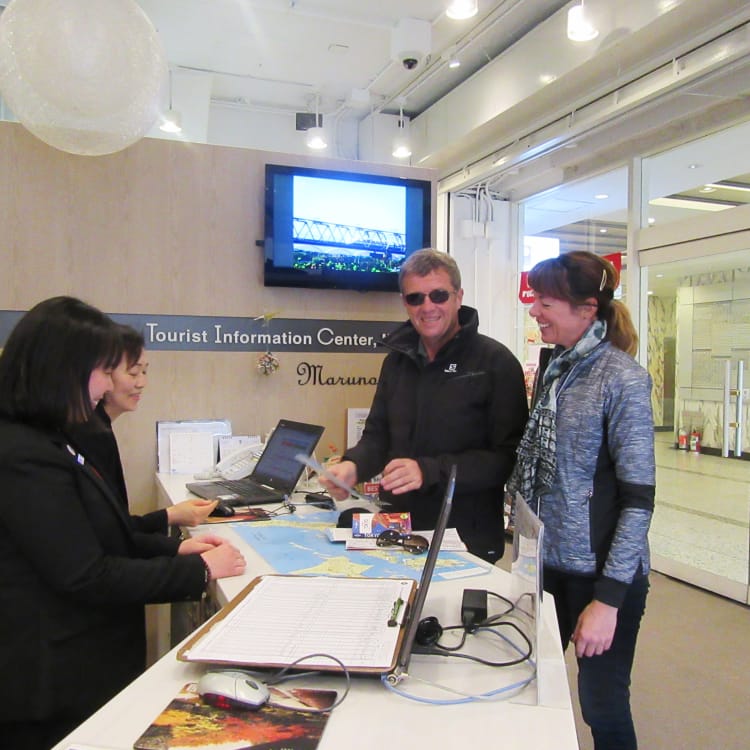
- List of Volunteer Guides
- Helping You Plan
There are numerous goodwill tour guide groups in Japan, offering up their language skills and insider knowledge to give tourists a richer experience.
Systematized Goodwill Guide Groups (SGG), registered with JNTO, can make arrangements for personal tours in various languages, offering the kind of local tips and insights you can't find in guidebooks. The list below details the areas and regions where such tour programs exist as well as information about how to get in touch.
Did this information help you?
out of found this information helpful.
Thank you for your feedback.
Recommended for you.

Please Choose Your Language
Browse the JNTO site in one of multiple languages
Trip within a Trip: Osaka and Kyoto, Japan

May 1, 2024 • 9 min read
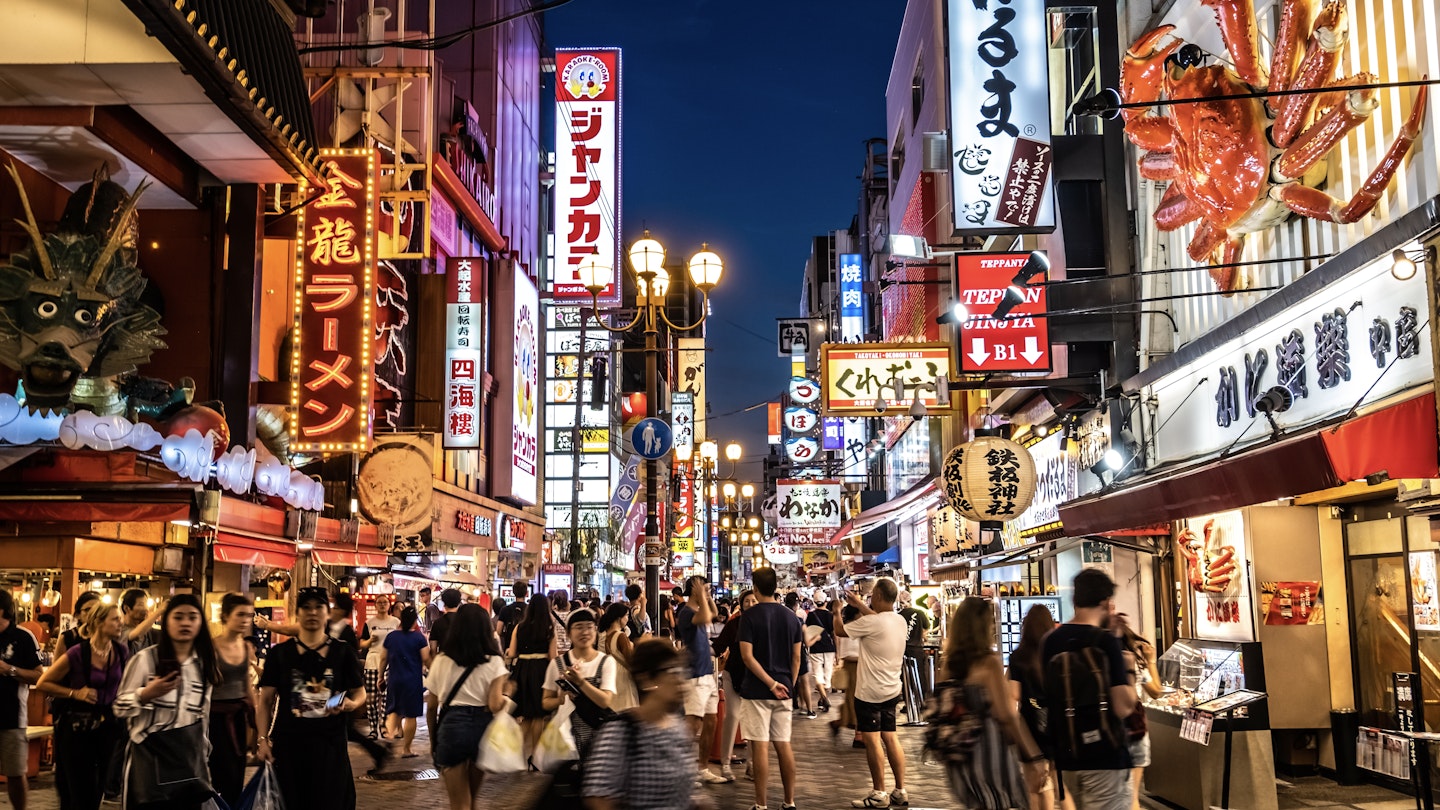
Make your next trip to Japan even better by adding on four days in exciting Osaka (pictured) and Kyoto © EarnestTse / Shutterstock
Senior Director of Content Laura Motta recently spent 10 days in Japan . To make the most of her time in the country, she included a four-day mini-excursion to Osaka and Kyoto – a trip within a trip, if you will, which anyone can replicate.
Everyone goes to Tokyo , and I would never tell you to skip it. But another critical part of any Japan itinerary is that magical Shinkansen (bullet train) ride south to Osaka , and the astounding sites that await beyond. A mind-boggling pair of cities – Osaka and Kyoto – are crammed with more shrines and temples, steel-and-glass skyscraper malls, scenic vistas and world-class restaurants than you can experience in a month, never mind in just a few days. This was my third trip to Japan and my second time visiting Osaka and Kyoto.
Before I get to my recommendations, here are a few practical tips:
- When to arrive: Arriving in Osaka around midday lets you drop your bags at the hotel, rest and then hit Dōtonbori in the evening, when its famous neon lights are ablaze.
- Getting there from the airport: The spotless, inexpensive airport limousine bus from Kansai Airport makes eight stops in Osaka, which include all of its main train stations.
- Getting around: Japan is world-famous for the ease and comprehensiveness of its public transit for a reason. You can – and certainly should – do this route without a car. High-speed (more expensive/faster) and local (less expensive/slower) trains cover every inch of this region and will shuttle you quickly between Kyoto and Osaka. Both cities have easy-to-use subway systems.
- What to pack: Certainly, your walking shoes and room in your stomach for a lot of ramen. Keep in mind that Japan has four distinct seasons and temperatures vary significantly between them. Check the weather ahead of time – and pack accordingly.
- How to structure your days: It’s tempting to cram your schedule when there are so many things to see. Yet realistically, you won’t be able to do more than two major sites – maybe three, if you’re really going for it – in a single day. This is especially true in Kyoto, where the best sites are far apart and can require up to an hour of travel to reach.
- Take it easy: Don’t forget to eat, hydrate, rest and wander. And tell yourself you’ll be back.
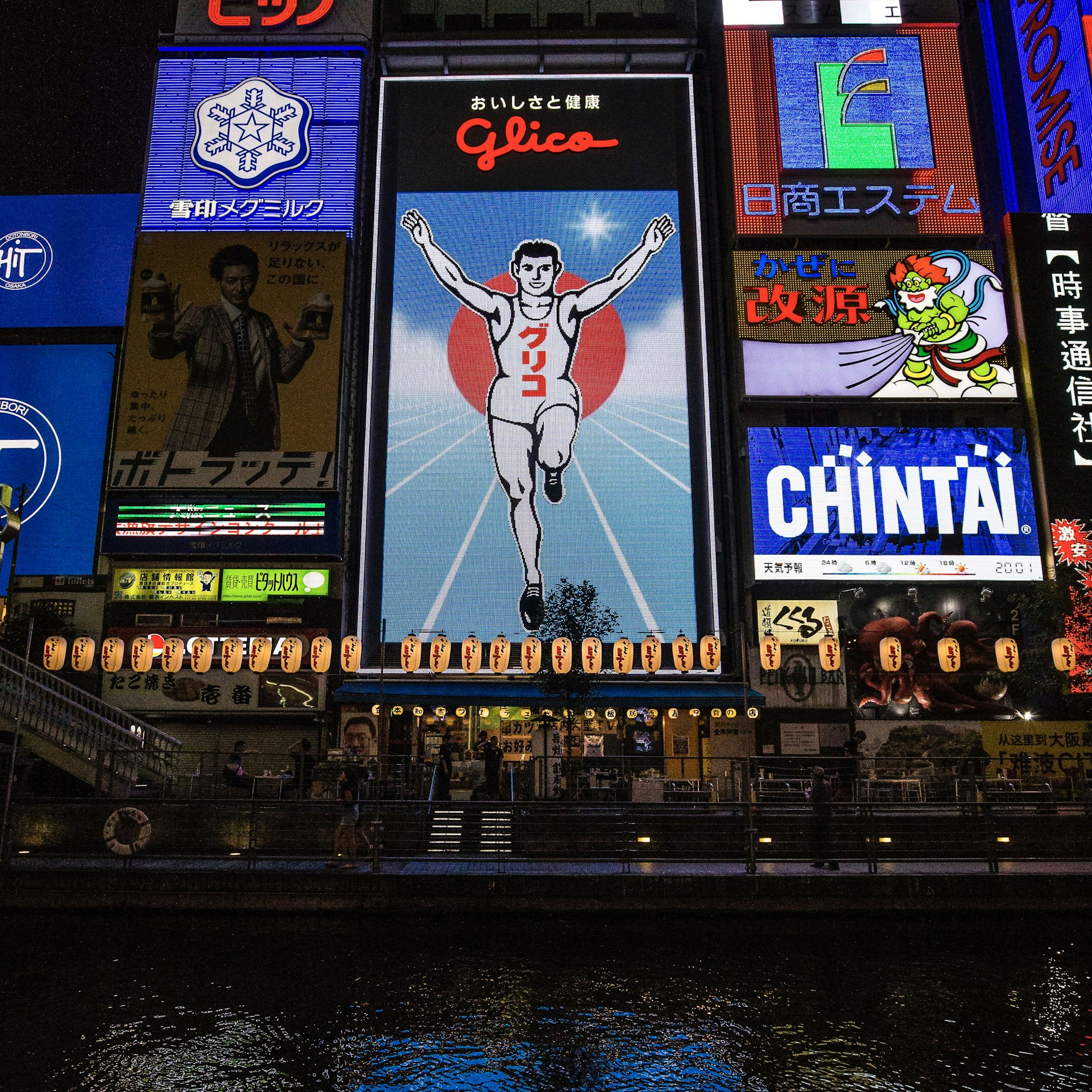
Day 1: Osaka
Snack time .
You’ve been traveling all morning. It’s time to eat. (Unless, of course, you stuffed yourself en route on the amazing bento boxes you can get at Tokyo Station.) Keep it simple like I did and grab onigiri (rice balls) or a sando at 7-Eleven. There’s one on every corner, you’ll only spend a few dollars, and buying local snacks – especially in Japan – is among travel’s greatest joys.
See the neon
If you’re in Osaka, go see the Glico man. It's a rule. Or maybe it's just mine. This famous animated sign of a runner, arms raised, about to cross the finish line in some hypothetical marathon in the sky, remains delightful despite the tourist crush on the streets below. This ad for the Glico candy company (candy bars give you energy – get it?) has become an informal mascot of Dotonbori , Osaka’s dining and nightlife district. After dark, it’s fun to wander here through the area’s many arcades, claw-machine and pachinko parlors, and shops. If you start here on a weeknight, it’s delightfully quiet.
Insider tip: Arrive before sunset and duck into a tiny side street to Hōzen-ji , a small temple known for its moss-covered statues. I was there when they were lighting the lanterns for the evening – a dreamy experience indeed.
Have a cheap and cheerful dinner
Dontonbori is teeming with restaurants. You can’t miss the distinctive signage advertising takoyaki (grilled octopus balls), gyoza and crab. My favorite takoyaki stand, Takoyaki Yoriabunzemon, is humble compared to its bombastic neighbors; there is no 5ft marquee. Inside, you’ll sit on a well-worn barstool while the single cook pours takoyaki batter into the famous round molds and serves it to you still piping hot, and slathered in mayo, barbecue sauce and bonito flakes. A warning: if you value the skin on the roof of your mouth, do not eat too fast here.
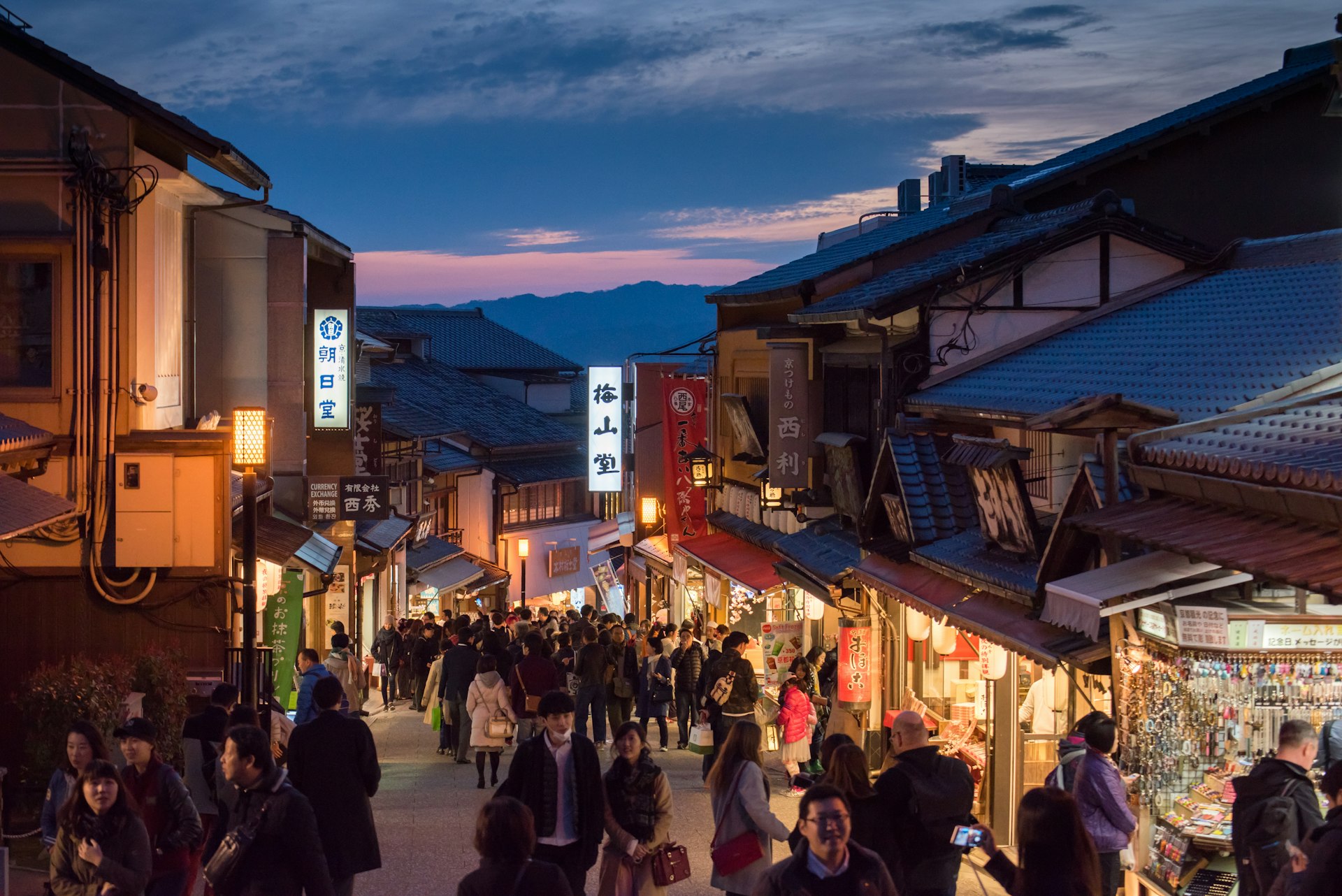
Day 2: Kyoto
Bullet train .
The Shinkansen train between Osaka and Kyoto is cheap and lightning fast. This trip is included in many Japanese rail passes , but if you’re paying for a standalone ticket, you’ll pay 1420 yen (about US$10). The trip takes 15 minutes, so slower local trains hardly seem worth the mildly cheaper price. Arrive midday and head to your hotel to check in and drop your luggage. Before you depart, don’t forget to look around Kyoto Station for the eki ink stamp, which you can imprint into a notebook as a souvenir. Every train station in Japan has a uniquely designed stamp, even if you sometimes have to ask the attendant at smaller stations where to find it.
Stay in style
If there’s one place to splurge on a fabulous hotel in Japan, it’s in Kyoto. Whether you’re strolling under vibrant fall leaves or spring cherry blossoms, or wandering the narrow alleys and stepped streets of the Gion district , Kyoto is romantic, its temples and shrines otherworldly. My choice was Hotel the Mitsui Kyoto , a new luxury property that blends smart contemporary design with traditional Japanese accents. Beside its excellent restaurant – more on that below – the highlight is the hotel's updated approach to the traditional onsen . This vast, moodily lit indoor space offers heated pools and loungers amid beautiful rock formations and water features. And unlike many onsen experiences, this one is a bathing-suits-required, mixed-gender space where everyone can hang out. There is also no surcharge for entry.

Visit the temples
My boyfriend cheekily refers to Fushimi Inari Taisha , Kyoto’s famous shrine with its rows and rows of vermillion gates ascending a dramatic hillside, as “the Instagram shrine.” It’s hard to say that he’s wrong: the site is a favorite among foreign travelers for good reason. The gates are simply gorgeous and – yes – photogenic. Just don’t expect to find yourself there alone.
Insider tip: Afterward, stop at the charming Vermillion Cafe for a sweet snack and coffee. Sit on the back porch, which overlooks a lovely stretch of forest, for especially serene vibes (spectacular in autumn).
If you still have energy left in the afternoon, head to Nishi Hongan-ji , a mammoth Buddhist temple complex that’s home to some of the largest wooden structures in Japan. After you marvel at the huge lanterns and expansive halls, stop by the brightly painted Chinese Gate, which dates back to the late 1500s. This temple is also within walking distance of Kyoto Station, and can be a good place to start or end your trip.
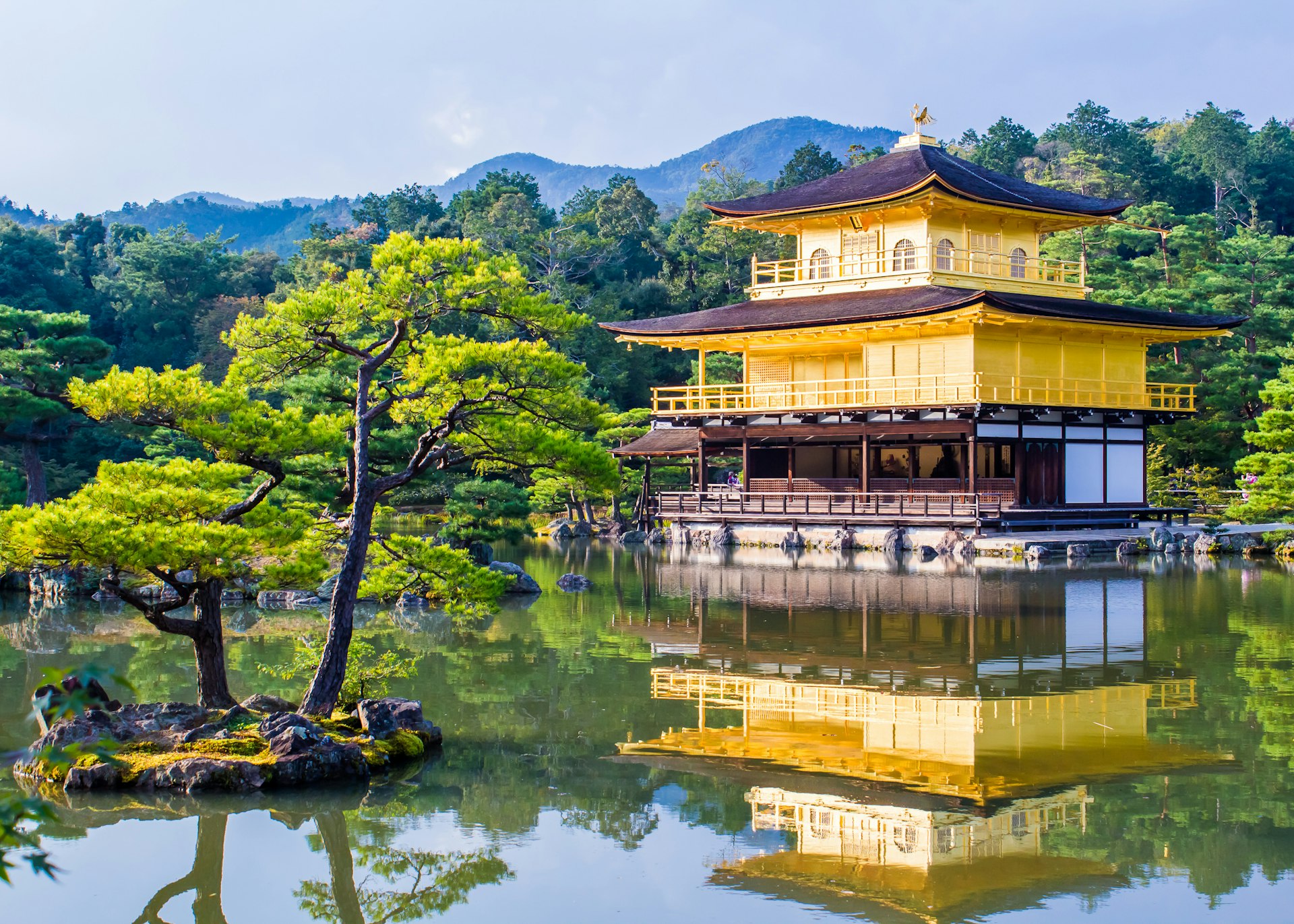
Day 3: Kyoto
Go for the gold.
Kinkaku-Ji , sometimes called the Golden Pavilion, is among Kyoto’s (and Japan’s) most famous and photographed landmarks. This UNESCO World Heritage site , where a brilliant gold temple appears to float along the shores of a serene lake, is well worth braving the crowds for, especially in sunny weather when the reflection of the lake glints off of the temple’s exterior walls. Go early, packing your patience – and you’ll understand instantly why so many people flock here.

School Bus Coffee Stop is a charming spot for an easy, affordable breakfast or lunch in cozy, industrial-farmhouse-style surroundings. Comforting selections like bagel sandwiches and avocado toast are accompanied by the shop’s excellent, house-roasted coffee.
Modern love
For an aesthetic palate cleanser after a quick lunch, stop by the Kyoto City KYOCERA Museum of Art , which houses rotating exhibits, often of contemporary and modern art, in a fantastic brick structure that dates to the 1930s.
Taste sensation
And you’d be remiss if you stayed at the Mitsui without eating at its elegantly flamboyant Italian restaurant, Forni . Yes, there are pizzas and pastas on its à la carte menu. But I’d highly recommend the tasting dinner, where impeccably composed dishes like sea bream citrus tartare and grilled wagyu arrive on geometric plates and stands. It’s a feast for the eyes as well as the stomach.
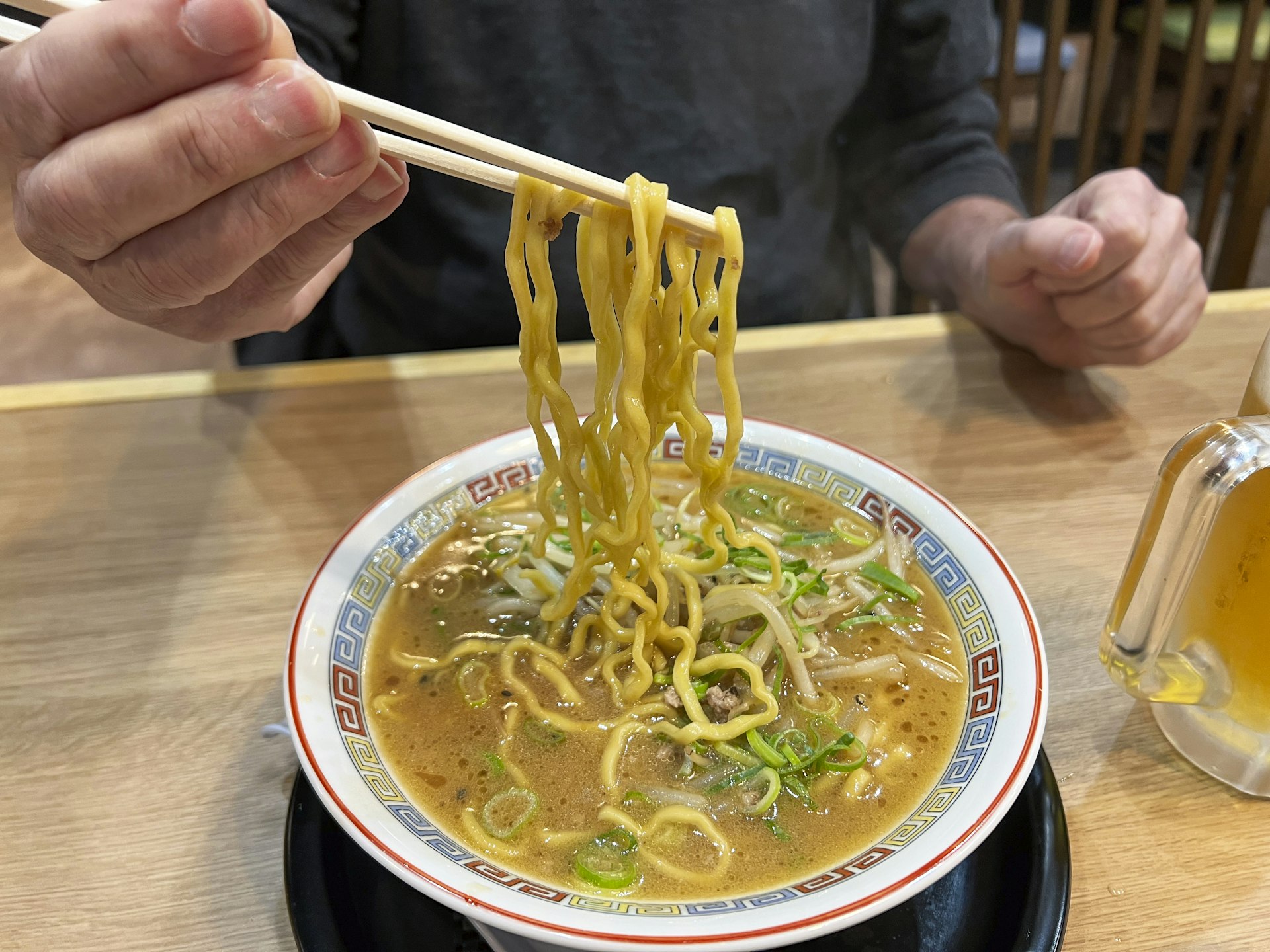
Day 4: Osaka
Smart hotel.
After going luxe in Kyoto on meals and lodging, I came back to Osaka looking to save money without sacrificing too much comfort. I wasn’t ready to sleep in a sarcophagus-sized pod or get every meal at 7-Eleven. (Well, not every meal – just a few.) After getting off the train from Kyoto at the massive Shin-Osaka Station, I took the easy-to-use metro to one of the best places I’ve stayed in Japan, the chicly designed, austere-but-comfortable Hotel Noum , just across the river from Temmabashi Station. The location made transportation connections easy and kept me sheltered from the stark urban rush of Umeda, Osaka’s high-rise business district. Rooms are small, comfortable and spotless; mine had a river view. The hotel also has an airy coffee shop in its lobby that attracts as many locals as travelers. I popped in here for a breakfast pastry and a latte and was ready to start the day.
Window(less) shopping
Even if you don’t stay in Umeda, visiting the neighborhood is a must. Spend a day wandering its cavernous, endless indoor shopping malls and underground food courts. You may never see daylight, but you will find everything from Hermès bags to the best 300-yen (US$2) gyoza you’ve ever tasted. I like to check in on the enormous red whale, which hangs suspended from the atrium of the Hep Five department store, which also happens to have a ferris wheel on its roof.

Enjoy a messy lunch
Train stations are where you’ll find some of the best food in Japan – and Osaka’s sprawling Umeda Station is no exception. My favorite train-station ramen is at Menya Takei, located behind the entry gates for the Hankyu Railway. Menya Takei specializes in tsukemen , in which the ramen noodles and broth are served separately. Dip the noodles into the broth to eat – yes, you’ll undoubtedly get it all over your clothes, but that’s part of the fun. Lots of laundry to do when you return home is a sure sign of a great trip.
Insider tip : Ask the gate agent to let you through. They’ll make you pay for a rail ticket on the way in, and then may refund you on the way out.
From Osaka, hop back onboard the Shinkansen for more exploring in Japan, or do what I did and catch a quick, affordable domestic flight to Tokyo’s Haneda airport to connect to your flight home.
Keep planning your trip to Japan:
The 24 best things to do in Japan Find out if you need a visa to enter the country Take to the open road on these top drives How to discover Japan on a budget
Explore related stories

Public Transport
Jan 31, 2020 • 7 min read
Whether you want canals, ceramics or buzzing cities, there’s a stop for you on the ‘sunny side of the mountain’. Here’s how to explore San'yō by train.

Apr 3, 2024 • 17 min read

Apr 2, 2024 • 10 min read

Mar 31, 2024 • 7 min read

Mar 28, 2024 • 7 min read

Mar 28, 2024 • 6 min read

Mar 28, 2024 • 11 min read

Mar 26, 2024 • 8 min read


COMMENTS
Since June 10, 2022 and the steady influx of tourism back in Japan, choosing a guide is an even more important matter. The Japanese government indeed required that the guide accompanying the travelers be at least a Tenjoin, that is to say "Certified National Tour Conductor". Obviously, 99 % of the volunteers or freelancers don't have such ...
How To Hire. If you want to hire a Licensed Guide Interpreter, you can request one when you book your trip or book tours through a travel agency. Always check and confirm that a Licensed Guide Interpreter will be conducting the tour, as it is not always a guarantee. Generally, they are independent professionals but you can also make a request ...
Japan Private Tour Guides is a platform that connects you with local guides who can help you plan your Japan trip, save your time, and offer you a personalized and memorable experience. Whether you want to explore Tokyo, Kochi, or any other destination in Japan, you can find a guide who suits your needs and interests. Book online and enjoy your Japan adventure with Japan Private Tour Guides.
Viator. If you're happy paying for a tour, then booking company Viator is a good place to start. They offer a bunch of different day (and night) tours, centered around temples, chow, photography and more-depending on what you're into. Prices start around US$40.00. They also do bike tours, if you're wanting to see the city on wheels.
Experience a flexible private tour in Japan, with a friendly personal guide from ToursByLocals. Get a local expert's perspective on their beloved city and delve deep into the nuances of Japanese culture. Explore Tokyo's stylish shopping and entertainment districts, such as Ginza and Roppongi, with your knowledgeable local guide. ...
No hidden fee. Your guide's financial autonomy is ensured within the scope of a classical guided tour: they will provide for their own transportation, meals and scheduled activities (temples, gardens, museum, etc.). The tour duration is your choice (from half a day and up to 3 consecutive days, or evening tour) from ~$56 per person for a couple.
Price - A private guide can be cheaper than a group tour. It is important to keep in mind that normally, a private tour guide salary will range from $35 ~ $45 USD. The private guide's cost may seem high at first, but this is the cost for your entire group, not per person. But there's a catch. If you are a group of more than 3 people, it is ...
Helps you make the most out of your trip. Having a tour guide by your side during your trip can enhance your experience in Japan. A good guide will be able to explain the local culture and traditions, give you other local insights, and even take you to off-the-beaten-path spots. You can have a richer, deeper understanding of the spots you visit ...
Plan a Trip to Japan with Local Tour Guides, and Tokyo, Kyoto, Osaka and More. 4.85 / 5. View all . 14647 reviews. Find your perfect tour guide at GoWithGuide. Relax and cherish unforgettable tours with loved ones. Create personalized tours for a truly memorable trip! ... Hiring A Guide In Tokyo: Pros & Cons. Tokyo, Japan
Travel serenely in Japan through our private tour guides. They will accompany you for a first or umpteenth trip alone (e) or more, to discover more inevitable or unknown places. All our guides live in Japan and are very familiar with the local culture. Our local guides based in Tokyo and Kyoto will assist and advise you for the entire duration ...
Our prices include. Your private custom guided tour! The preparation of your tour in Tokyo by the guide, according to your preferences. Reservation fee (no additional administration fee or tips) The guides' personal expenses : Their full transportation fees (to the meeting place and during the tour) Their lunch up to ¥1,000 (~$7) per meal.
Note*2: The Nationally-licensed Tour Guide-Interpreter certification is issued by the Japanese government requires a good knowledge and understanding of Japanese culture and history. For Travel agencies: Thanks to our connections within our government licensed guide network, we have become known as one of the best DMCs for FIT in Japan.
1) Tsukiji, Tokyo Station Food hall and Harajuku Private Tour featuring food & culture. 2) Best of Tokyo in 4 hours - Private Tour. 3) Tokyo 1-Day Tour Full of Must-see Places. 4) Best of Eastern Tokyo - Private Tour. 5) Master Tokyo's public transport & visit hidden neighborhoods.
Here are a few comparisons I made for Japan's available marketplaces for guides: Veltra. This website is quite well-known among solo travelers. Their list of activities and tours in Japan is very impressive. However, it is not quite the right place if you're looking for just a private guide to accompany you in your trip since most of the ...
Languages: Japanese (fluent), French (fluent), English (fluent) Biography: I have been fully booked from the end of March to the end of April.When you inquire me, please let me know which date you want to have a tour. Thank,... Credentials: Obtained the Japanese national license of tour guide and interpreter in 2008 in English and in French.Being fully trained as a guide by the Japan Fe,...
⭐⭐⭐⭐⭐ Come & enjoy the beauty of Japan with our highly rated Japan private tours. Benefits of Hiring a Guide in Japan. Hiring a guide to help you travel in Japan has a lot of benefits for you, which I will discuss below: Navigate Easily; A private guide could take you to your destinations easily.
Tell us your destination, date, and group size. Our team of travel experts and guides will design a tailored itinerary just for you. Enjoy your trip with peace of mind knowing everything is taken care of. Divided between electric cityscapes like Tokyo and Kyoto and wild mountains clad in snow and jungle alike, Japan is a real gem of the Far East.
My tour fee is 20,000yen for 1-6hours (135.28USD) 30,000yen for 7-9hours (202.93USD) 40,000yen for 9-12hours (270.57USD) I have half-day tours listed at 20,000 yen (135.28USD) at the moment but you can combine them or do a custom tour for roughly up to 9 hours for 30,000 yen (202.93USD). The time transiting to and from your hotel for pick up or ...
Guides will also know about road construction, weather conditions, and other potential problems. Fully licensed tour guide interpreters are required to pass a history exam, so they will know Japanese history better than most. A private tour with one of these guides is the best way to get a deeper look at Japanese history and culture.
Professionalism and Customer Service: A tour guide should possess a professional demeanor, be organized, punctual, and approachable. Excellent customer service skills, including patience, empathy, and the ability to handle diverse personalities, are essential for providing a memorable and enjoyable trip for tourists.
Here is a selection of the best guided tours in Osaka; 1) Private Full Day Osaka Tour. 2) Private Walking Tour in Nara. 3) Osaka Food Tour: Day or Night. 4) From Osaka to Himeji Castle and Akashi Kaikyo Bridge Private Tour. 5) One Day Private Tour to Holy Koyasan.
Our prices include. Your private custom guided tour! The preparation of your tour in Kyoto by the guide, according to your preferences. Reservation fee (no additional administration fee or tips) The guides' personal expenses : Their full transportation fees (to the meeting place and during the tour) Their lunch up to ¥1,000 (~$7) per meal.
TEL: 080-1654-8525 FAX:0191-34-1005 Service hours: 9:00 - 17:00 Please contact Ms. Yuko SAYAMA by e-mail, telephone or fax at least one month in advance. Message. A team of Goodwill Guides can show you around the UNESCO World Heritage Site of Hiraizumi. Tour guide reservations are required at least one week in advance.
Japan Question Forum: Does hiring an immigration attorney help?.
Stay in style. If there's one place to splurge on a fabulous hotel in Japan, it's in Kyoto. Whether you're strolling under vibrant fall leaves or spring cherry blossoms, or wandering the narrow alleys and stepped streets of the Gion district, Kyoto is romantic, its temples and shrines otherworldly.My choice was Hotel the Mitsui Kyoto, a new luxury property that blends smart contemporary ...